MALAGA
Arriving at Malaga aiport after an uneventful flight from Birmingham, we took a train into Malaga. We made for the old town and, somewhat by mistake, while looking for the Wine Museum, found the Museo Carmen Thyssen. Thre are no pics because we had to leave our cases in a lock-up and, like a prat, I left my phone in my bag.
The main focus of the museum is 19th-century Spanish painting, predominantly Andalusian, based on the collection of Carmen Cervera, fifth wife of Baron Hans Heinrich Thyssen-Bornemisza.
Since 1992 the Thyssen family’s art collection has been on display at the Thyssen-Bornemisza Museum in Madrid. However, Carmen Thyssen has been an art collector in her own right since the 1980s, and her personal collection is shown separately. In 1999, she agreed to display many items from her collection in the Thyssen-Bornemisza Museum for a period of twelve years. Meanwhile, a home for her collection was sought in Málaga. This museum, a conversion of a sixteenth-century building, opened to the public on 24 March 2011.
The old town has many small shops like this nuts and dates stall
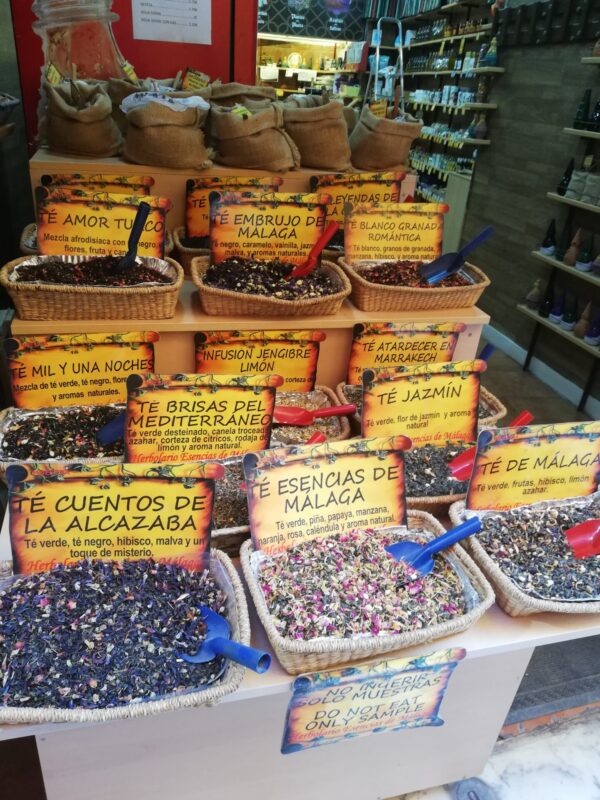
Nuts and dates
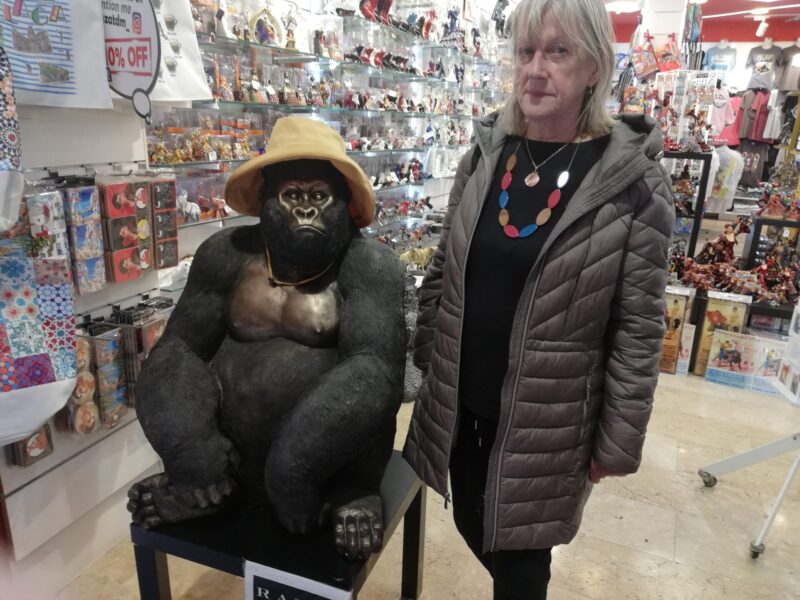
Jennifer and her new bloke. Better looking than me, and more intelligent. Allegedly
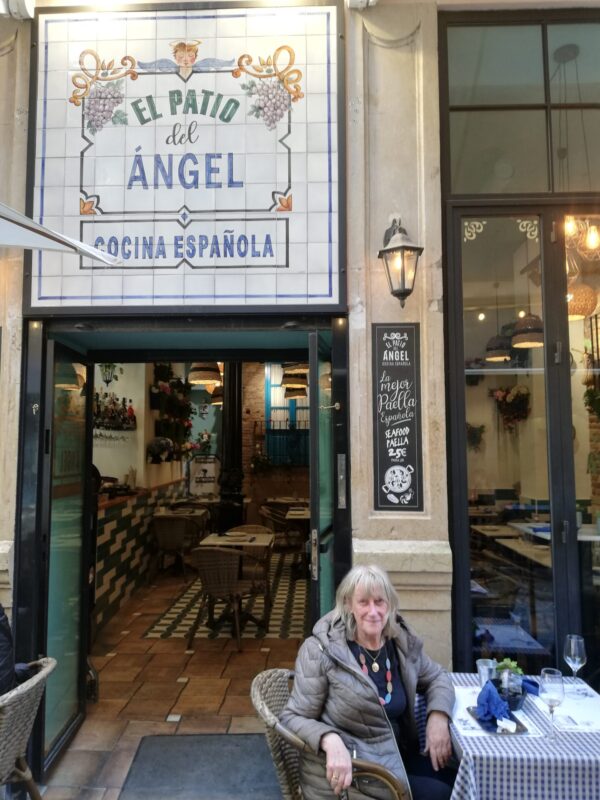
We had some delicious tapas at this little restaurant, including tasty anchovies.
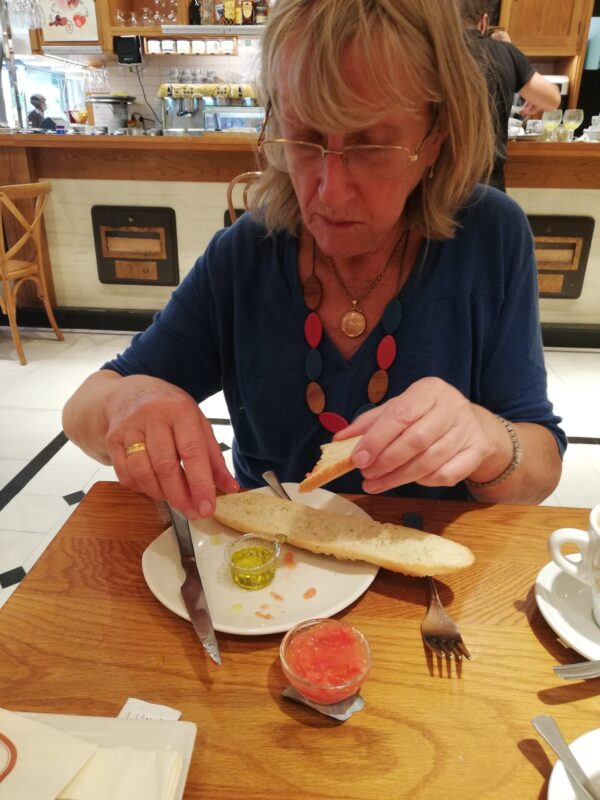
On the 21st we walked into Fuengirola, which isn’t quite so seedy once you get off the seafront with its endless row of bars and stink of urine, and had lunch at a restaurant. Jennifer has a very common (and cheap) Spanish breakfast, tostada con tomatey aceite (toast with mashed tomato and olive oil.). Sounds a bit naff but is actually very tasty and healthy.
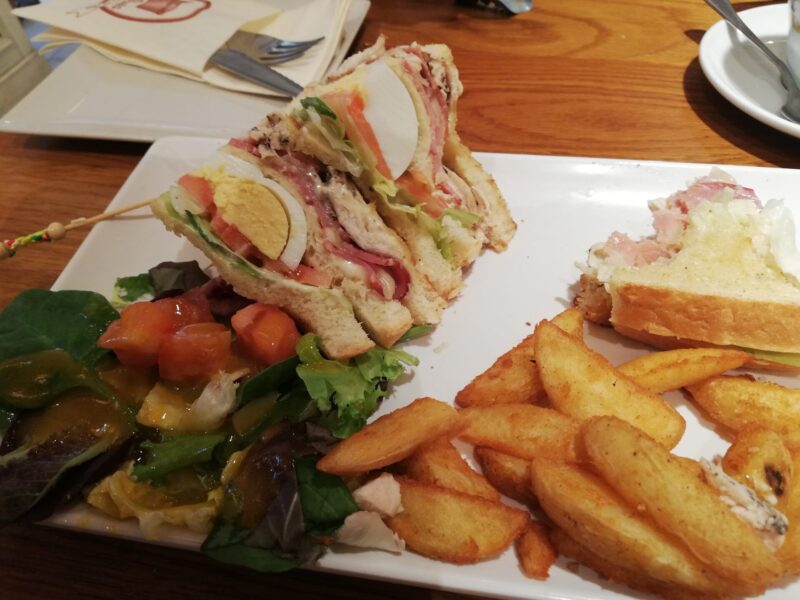
This is what I had. A double sandwich with loads of stuff in it and CHIPS.

In the evening we watched football on the telly
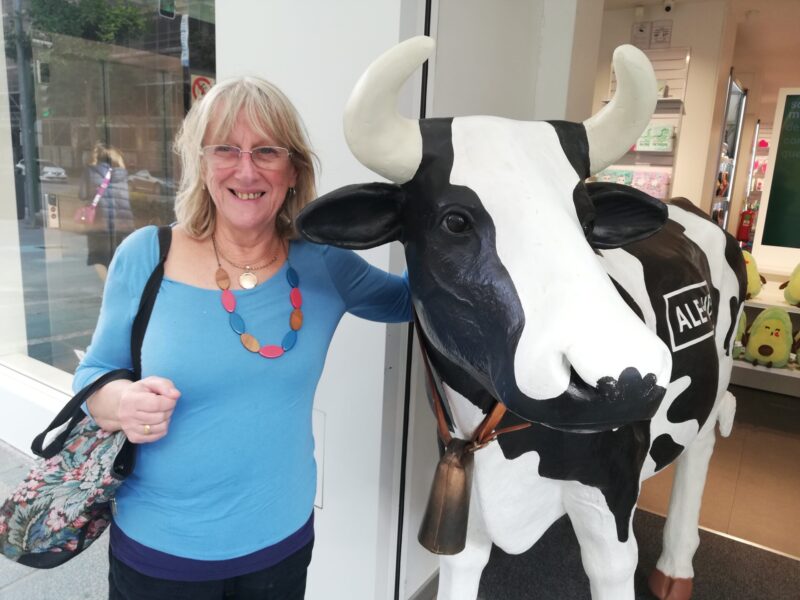
On the 22nd we got the bus into Marbella and met this charming cow.
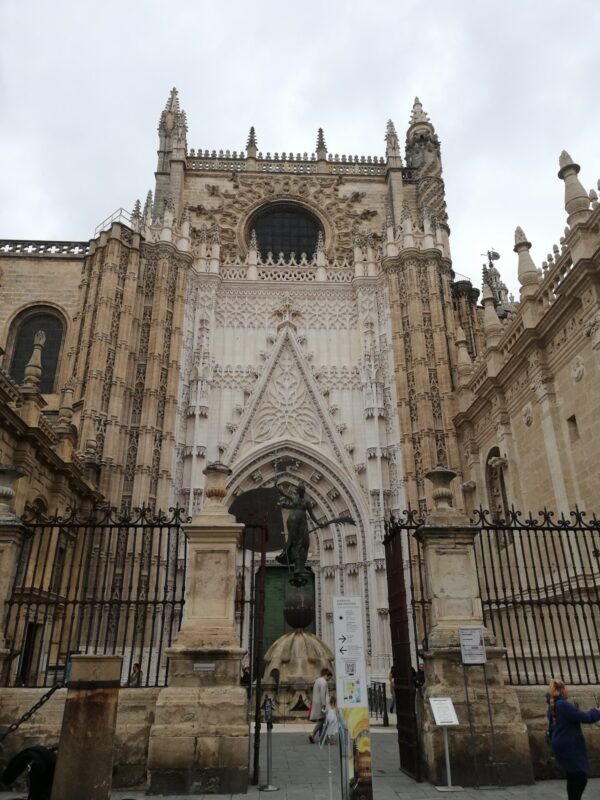
On the 23rd we got up early and walked into Fuengirola, got the train to Malaga and then the bus to Sevilla. After a breakfast of toast, tomato and olive oil, we walked to the old town. This is the entrance to the cathedral.
Construction work on the site started in the mid-15th century and from 1172 to 1248 it was an Almohad mosque. From 1248 to 1434 it was officially a “Christianised mosque”. Shortly after Seville’s conquest by Ferdinand III, Yaqub Yusuf’s mosque was converted into the city’s cathedral. Its orientation was changed and its spaces partitioned and adorned to suit Christian worship practices. The internal space was gradually divided into chapels by constructing walls in the bays along the northern and southern walls. Almost the entire eastern half of the cathedral was occupied by the royal chapel that would hold the bodies of Ferdinand, his wife and Alfonso the Wise. From 1434 to 1506 it was under construction as a gothic cathedral but, 5 years after its completion in 1511, the crossing lantern collapsed and work on the cathedral recommenced. The crossing again collapsed in 1888, and work on the dome continued until at least 1903. The 1888 collapse occurred due to an earthquake and resulted in the destruction of “every precious object below” the dome at that time.
The cathedral is the 4th largest church in the world. It was the site of the baptism of Infante Juan of Aragon in 1478, only son of the Catholic Monarchs Ferdinand II of Aragon and Isabella I of Castile. Its royal chapel holds the remains of the city’s conqueror, Ferdinand III of Castile, his son and heir, Aldonso the Wise, and their descendant, King Peter the Cruel. Christopher Columbus and his son Diego are also buried in the cathedral.
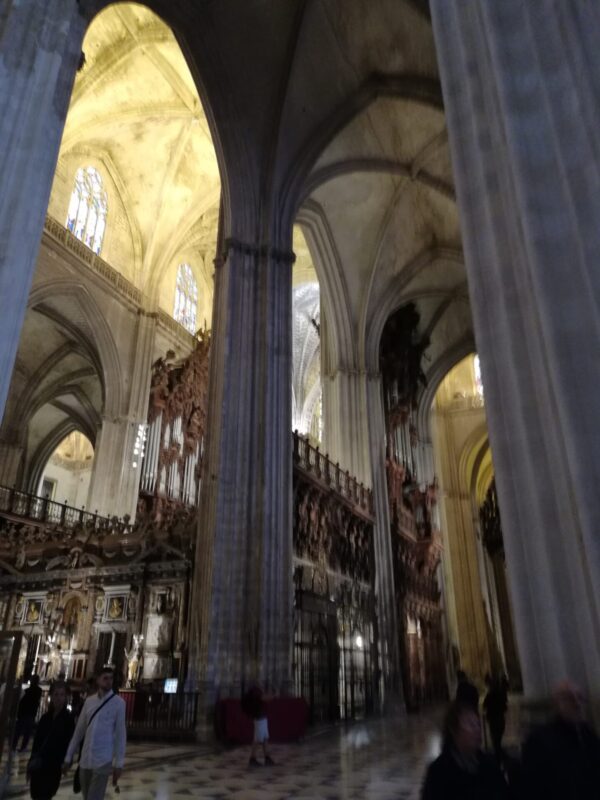
Inside the Cathedral.
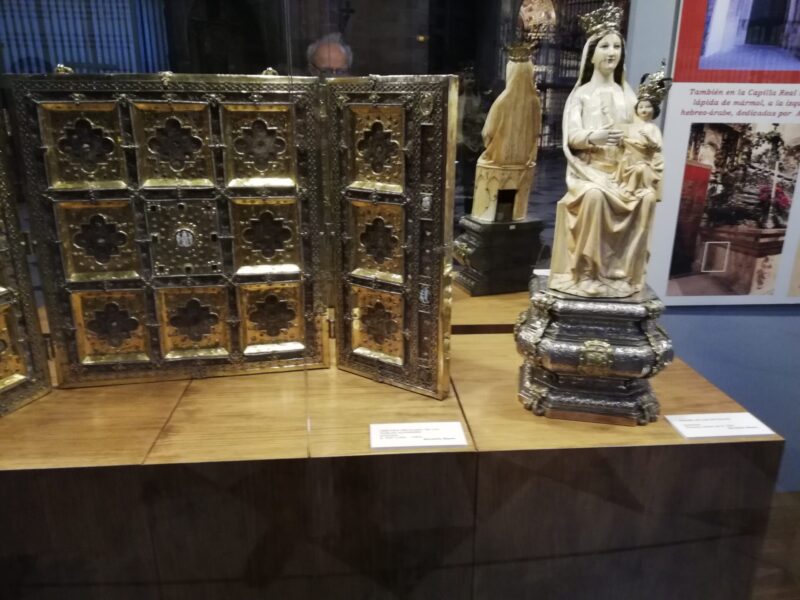
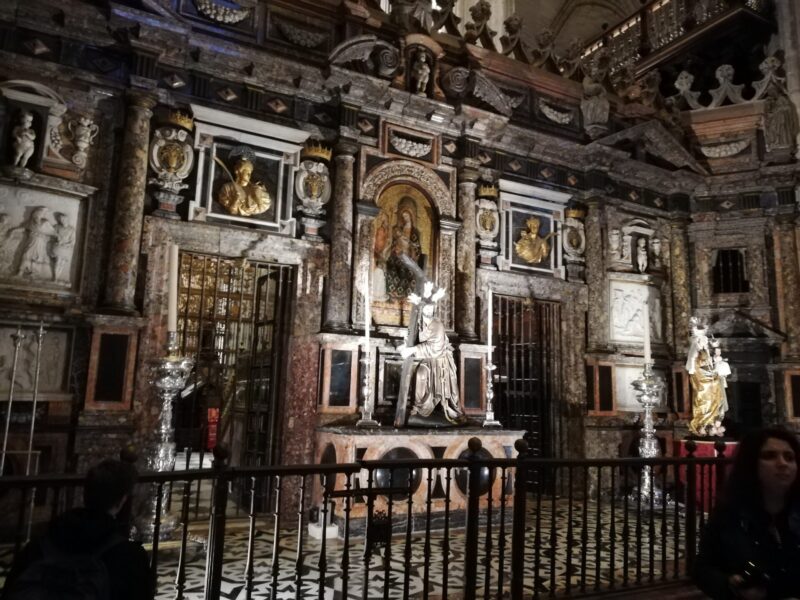
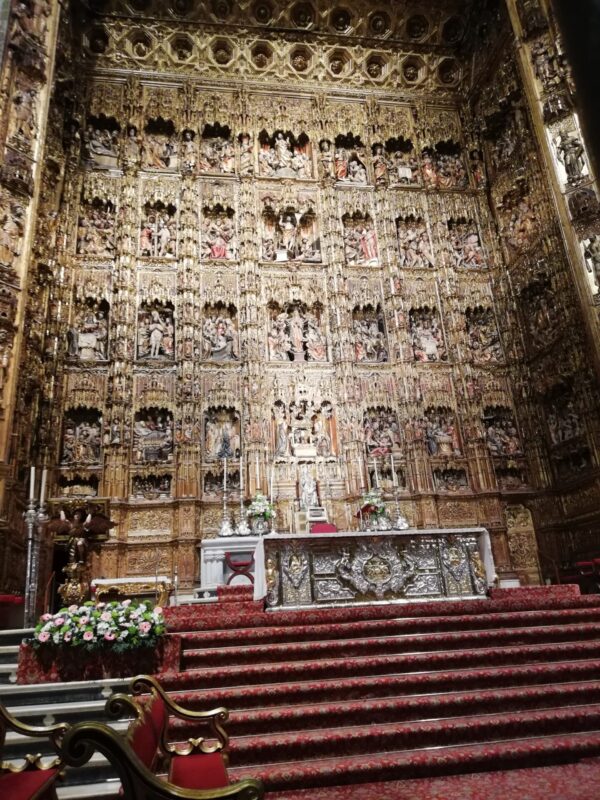

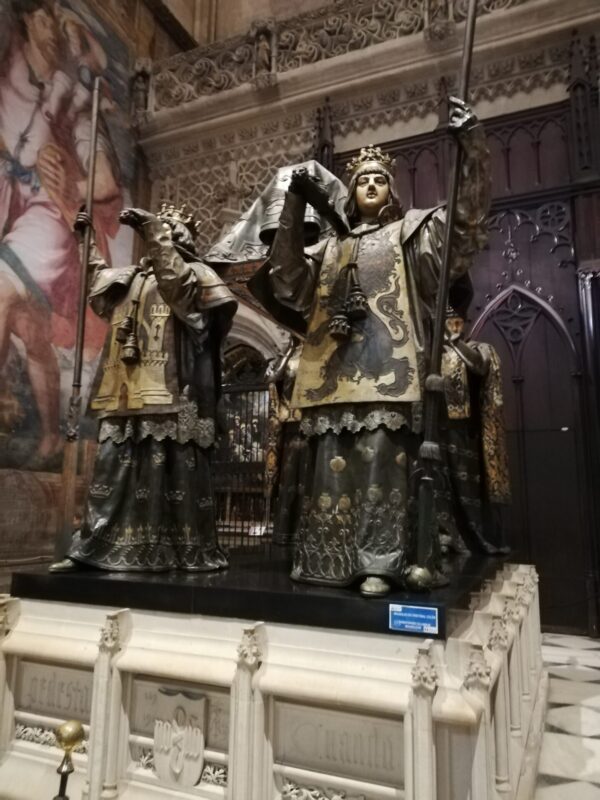
Mausoleum of Columbus
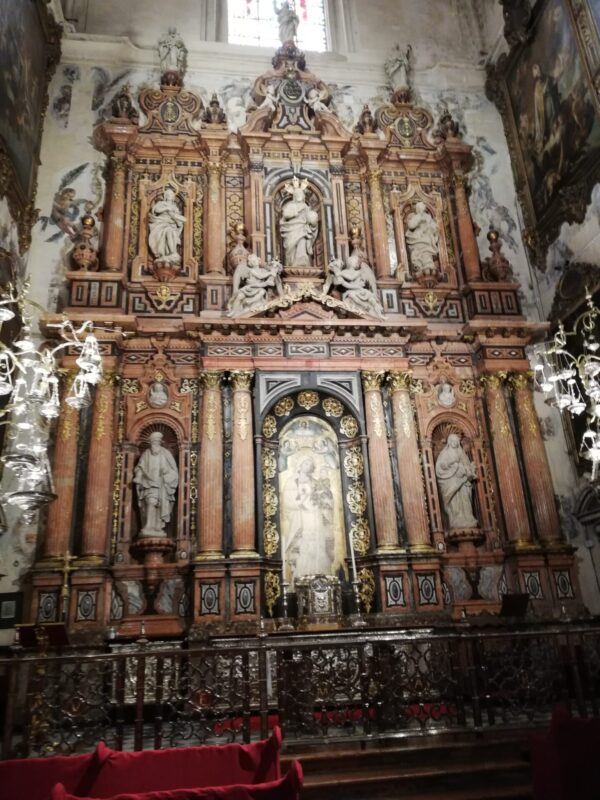
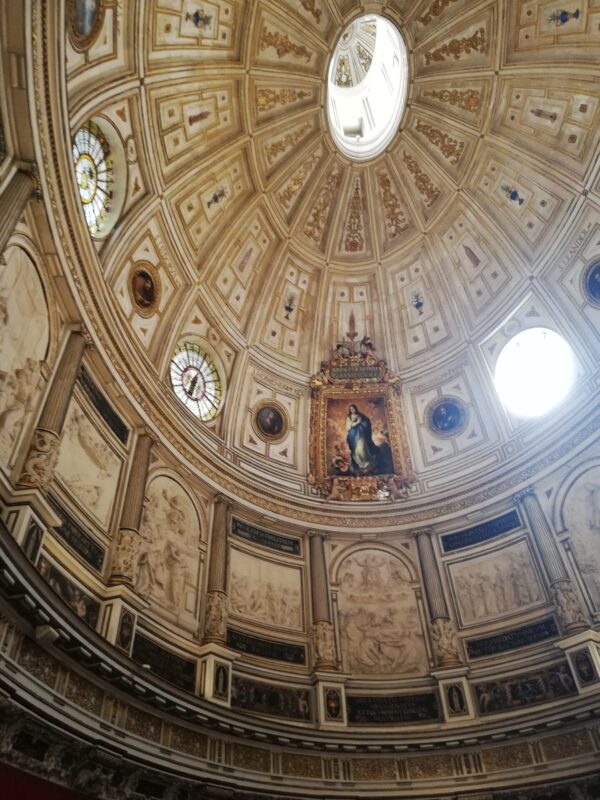
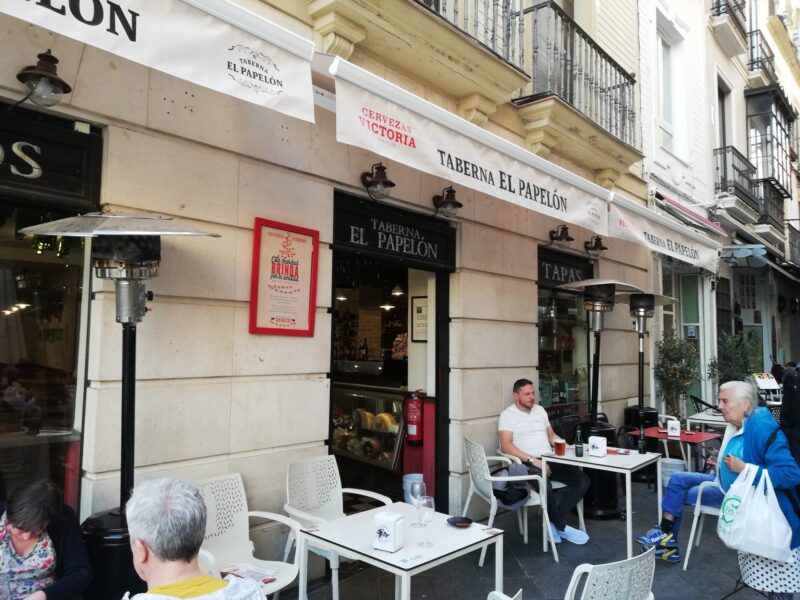
Don’t go to this place. Total rip-off. They gave us a bowl of potato chunks which I assumed were free (honest places normally give you a bowl of olives) so we ate them. And then got charged 8 euros. Got convinced to order a “mixed meat plate for two” for 24 euros which was 5 small pieces of badly cooked meat and chips, barely big enough for one. The two people on the left were from Newcastle and were bigger idiots than we were. I gave it a “1” on tripadvisor, only to discover that practically everyone else had done. Serves me right for not sussing the place out before we went there. We have travelled through 36 countries and still got mugged.

Roadside orchestra of midgets

the entrance to the Alcazar
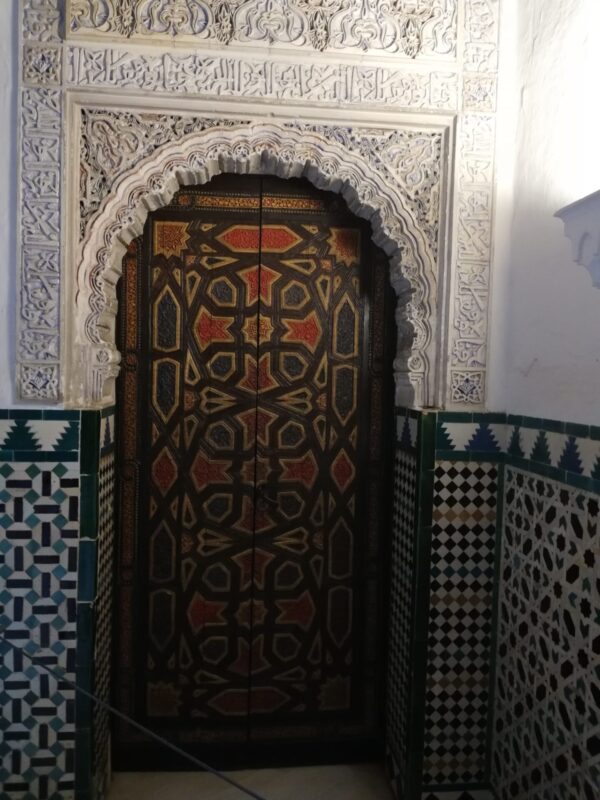
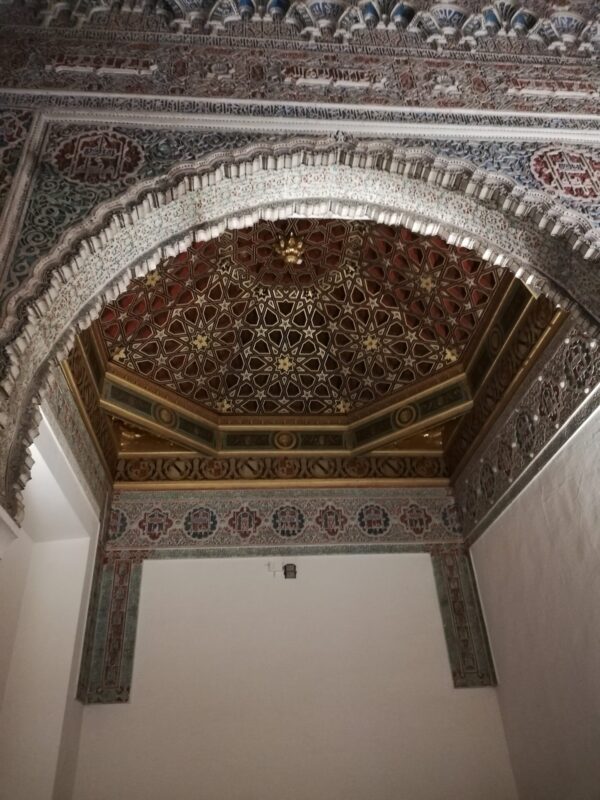
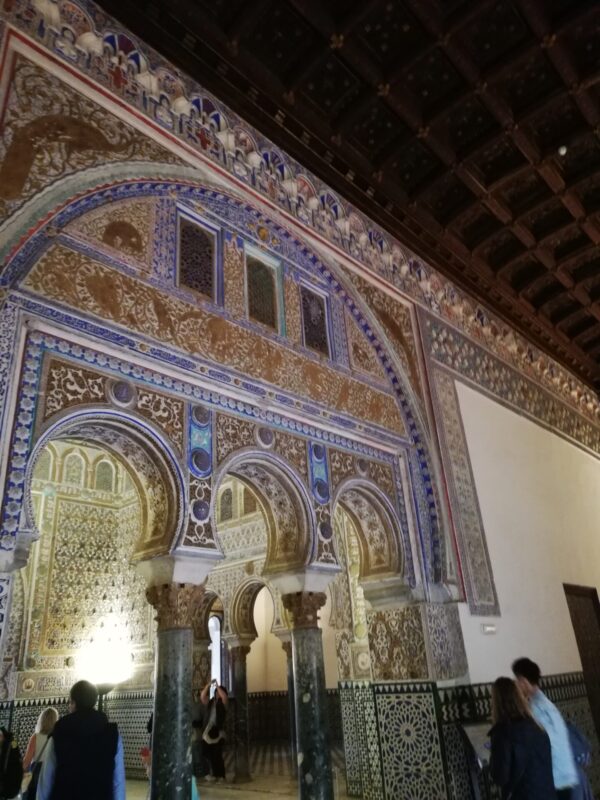
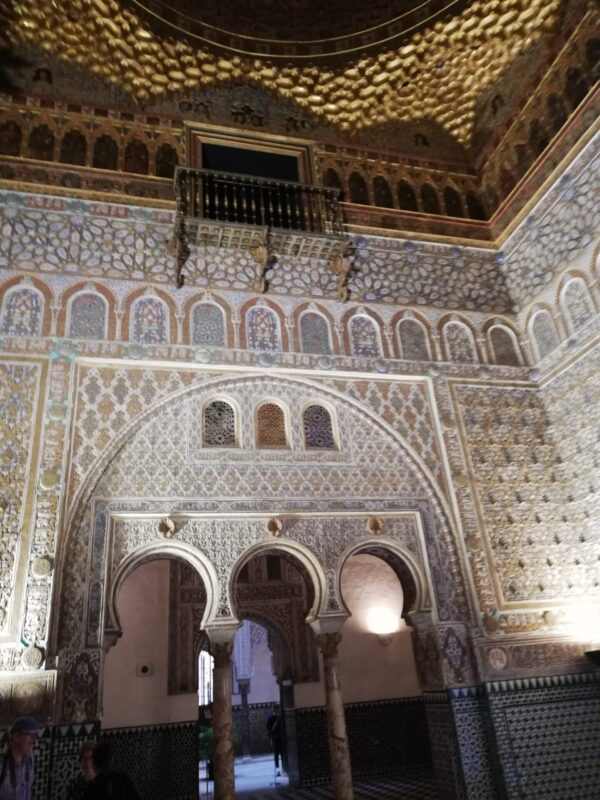
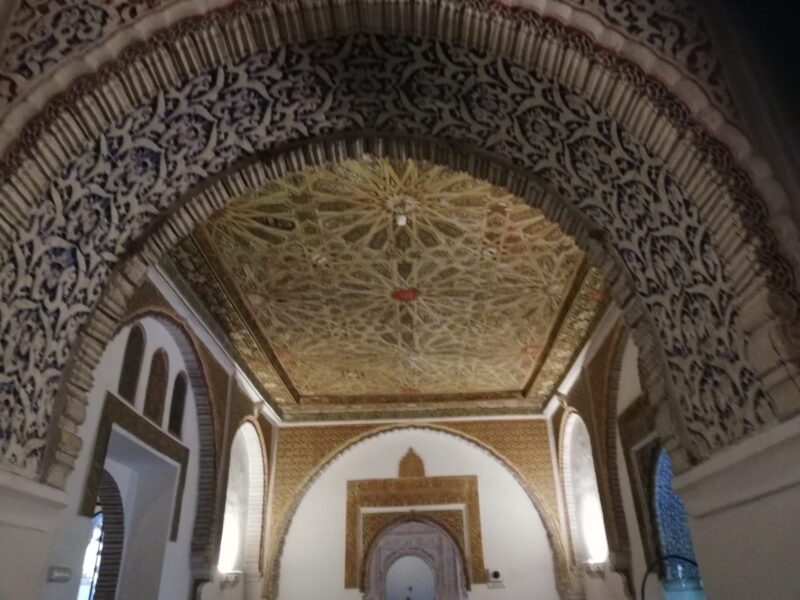


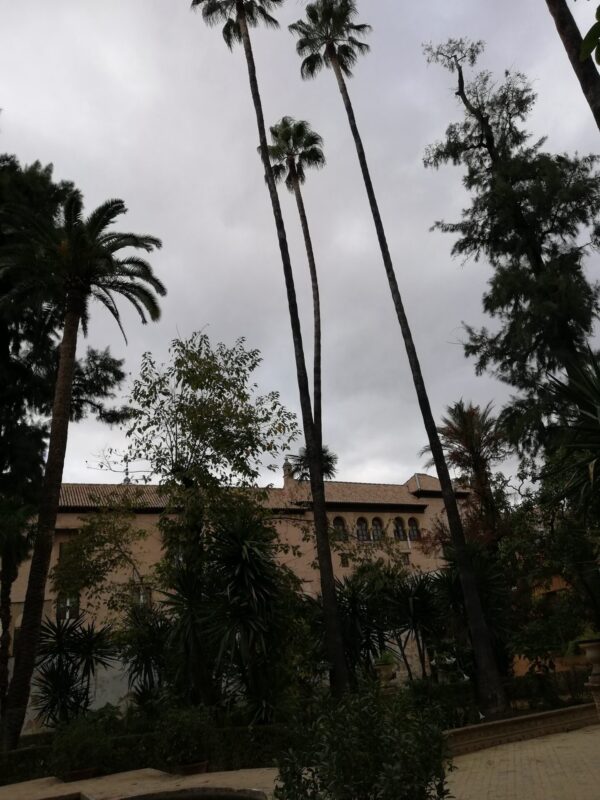

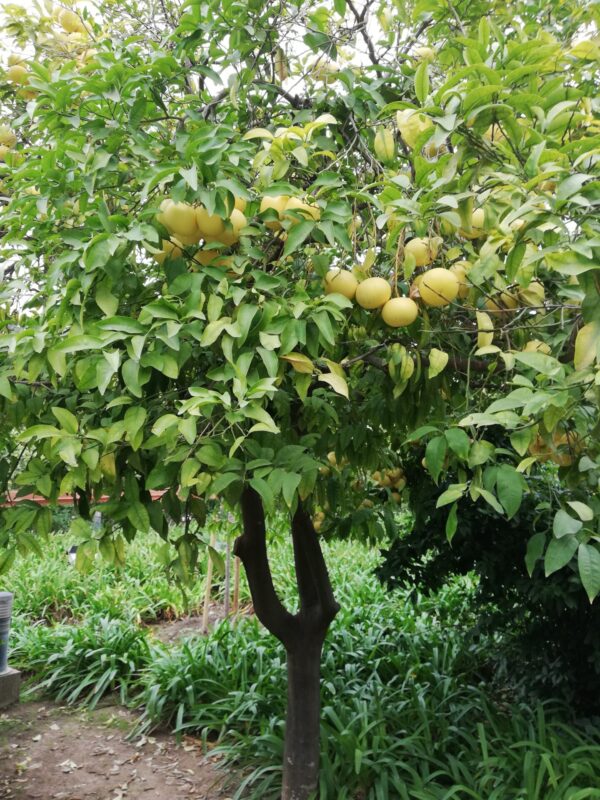
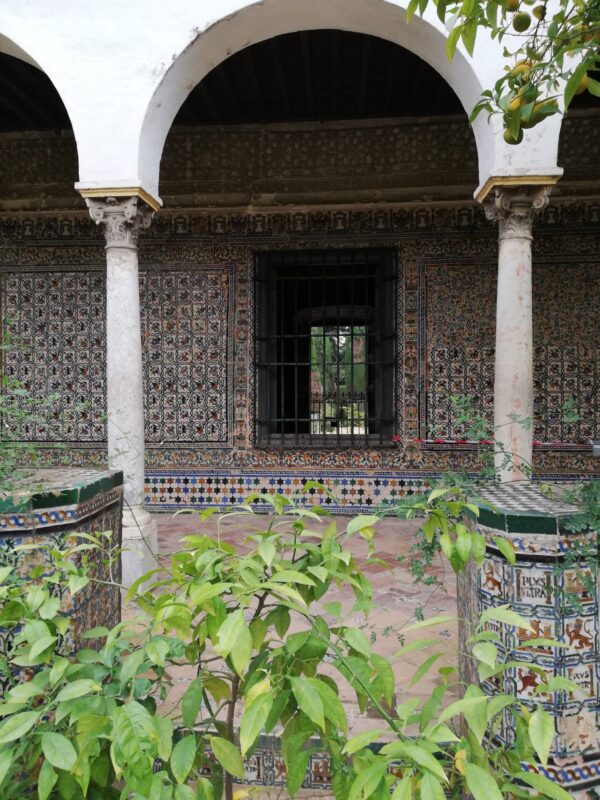
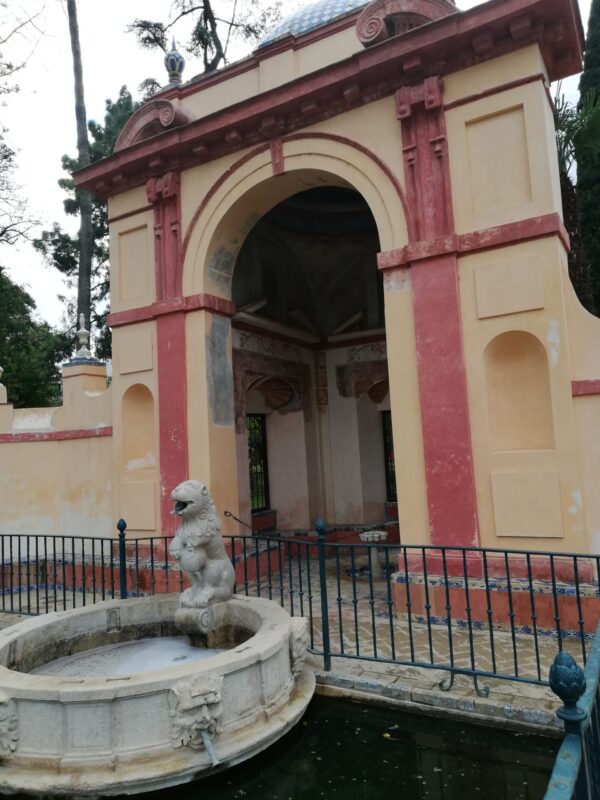
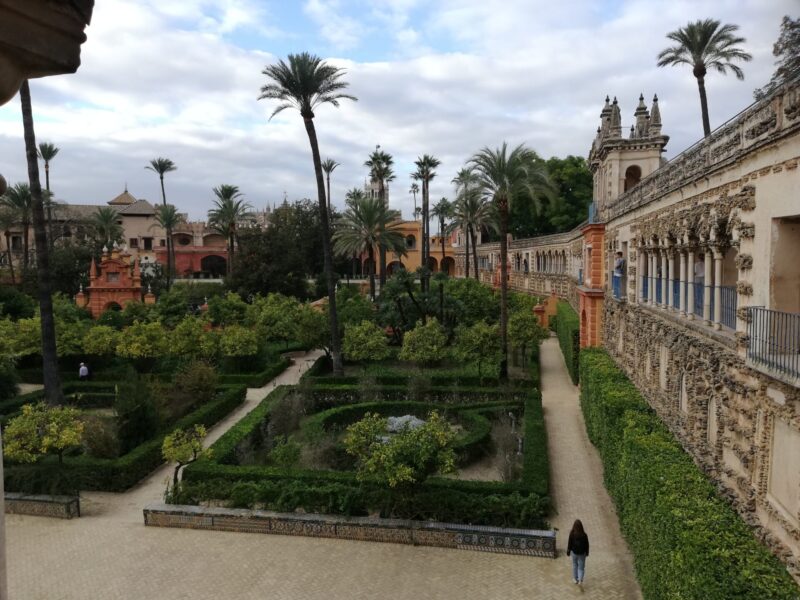

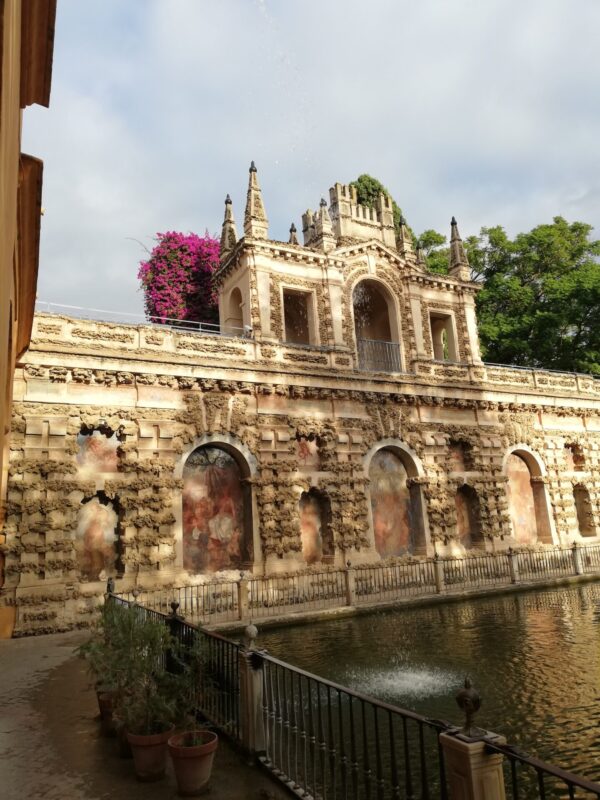

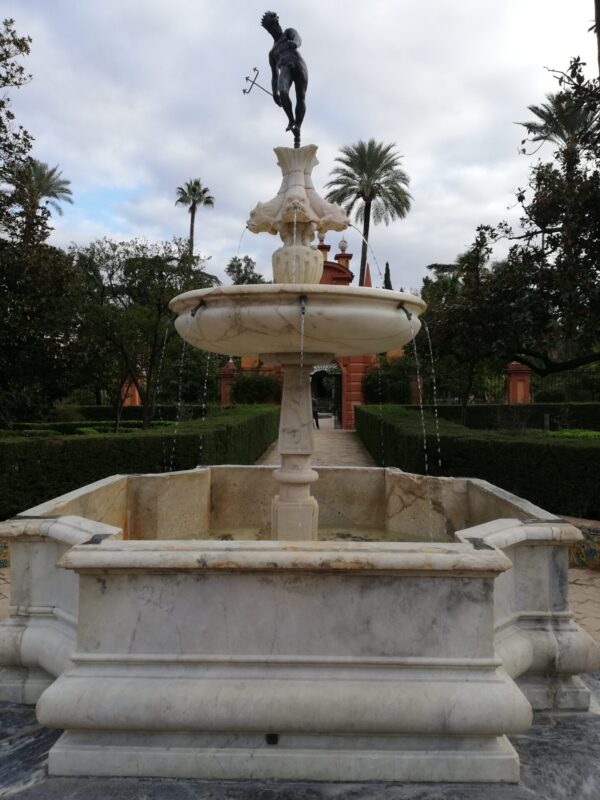

This place is to be highly recommended. Good service and delicious tapas.

In the evening we went to this bar recommended by the receptionist in the hotel. We saw some genuine flamenco watched by a large crown of Spanish people, somewhat better than the stuff put on for tourists. This is us and a famous flamenco singer Allende.

On the 24th we went to see the Casa de Pilatos. It was built in the 16th century by order of Don Pedro Enriquez and later by his son Fadrique Enriques de Ribera. This is the most beautiful palace in Seville, after the Alcazar of course, and it is one of the most best-preserved buildings from the 16th century. The “House of Pilatos” is named after the house of Pontius Pilate, which they tried to emulate, and by whom Fadrique Enriques de Ribera was inspired during his pilgrimage to Jerusalem.
The construction of this palace, which is adorned with precious azulejo tiles and well-kept gardens, was begun in 1483 by Pedro Enríquez de Quiñones, Adelantado Mayor of Andalucía, and his wife Catalina de Rivera, founder of the Casa de Alcalá, and completed by Pedro’s son Fadrique Enríquez de Rivera (first Marquis of Tarifa), whose pilgrimage to Jerusalem in 1519 led to the building being given the name “Pilate’s House”.
On 20 October 1520, Don Fadrique returned from a trip through Europe and the Holy Land. During Lent in 1521, he inaugurated the observance in Seville of the Holy Via Crucis (Holy Way of the Cross). The route began in the Chapel of the Flagellations of his palace and ended at a pillar located not far from the Templete, or Cruz del Campo (The Cross of the Field,) located outside the city walls. This route ran the same distance of 1321 paces supposed to have separated the praetorium of Pontius Pilate from Calvary. The Marquis’s palace, the Palacio de San Andrés, was then still partly under construction; it later became known as the Casa de Pilatos through its association with the Vía Crucis, and was much altered over the next few centuries. Popular imagination has since mistakenly identified the palace as a copy of the house of Pilate; thus the rooms have been named along the theme of the Passion of Christ: “Hall of the Praetorian”, “Chapel of the Flagellations”, etc. It was declared a National Monument in 1931. The oldest documentation of the name Casa de Pilatos is from 1754.

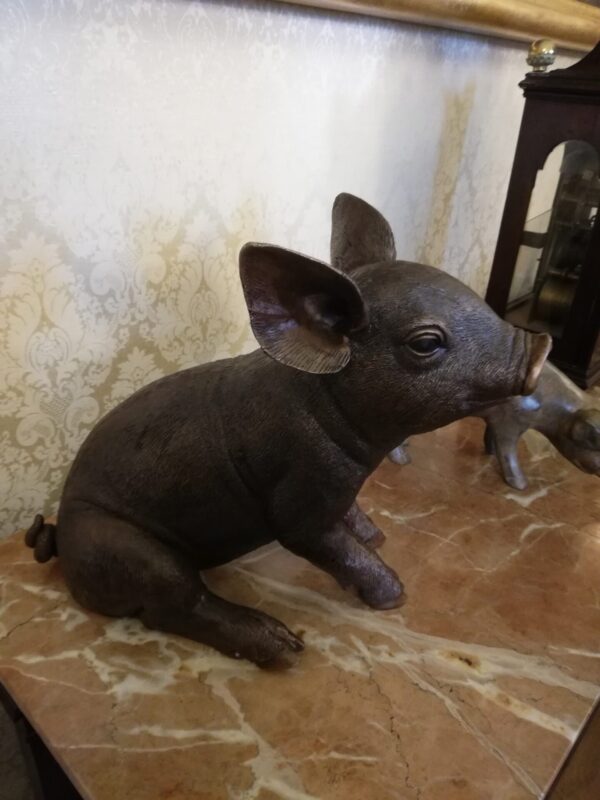

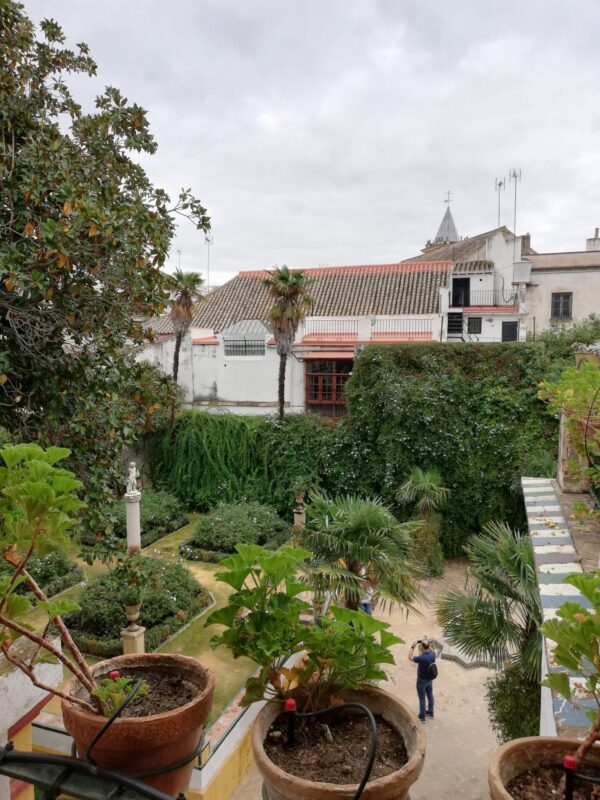


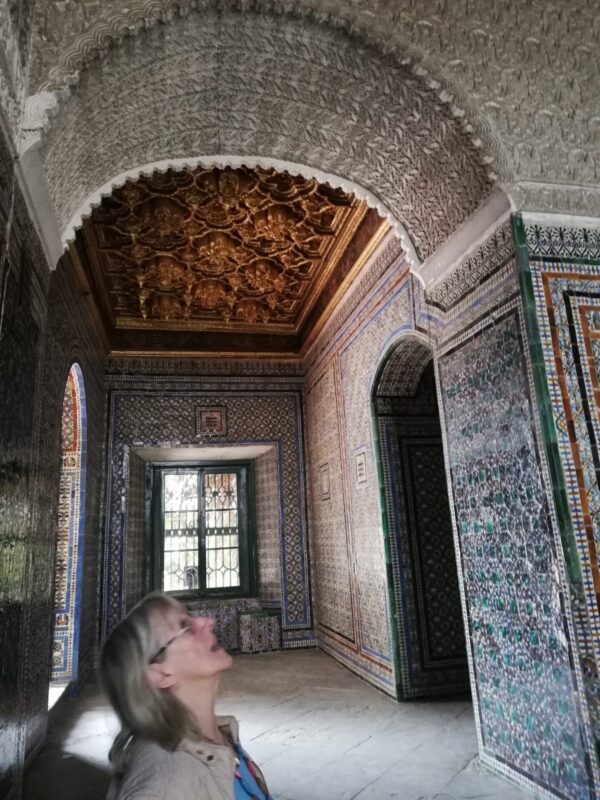
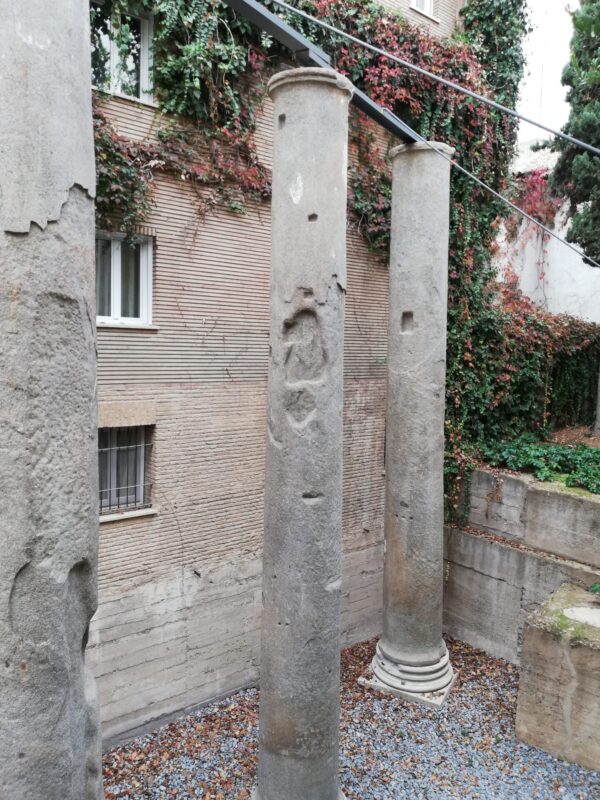
Roman columns in Seville
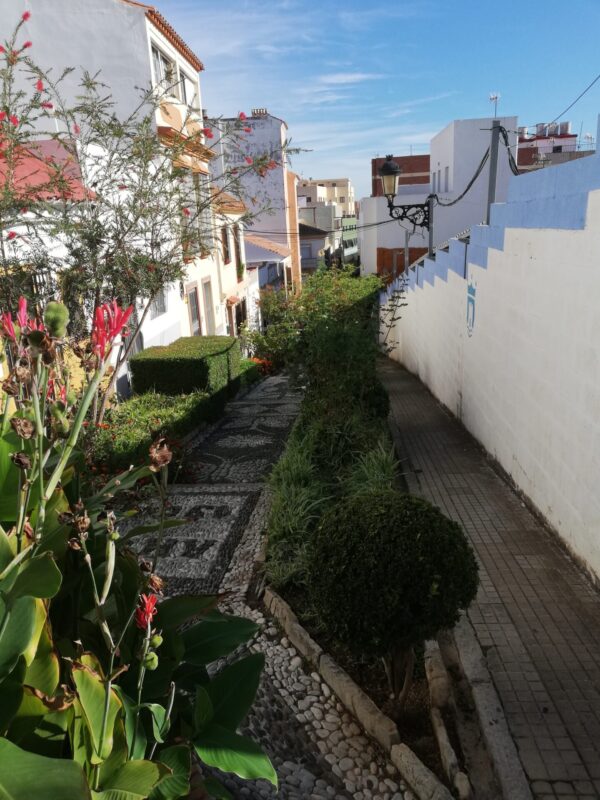
Street in Algeciras

Plaza Alta in Algeciras. We travelled by bus to Algeciras in the belief that we could get a ferry to Tangier, and we spent a very pleasant two hours (and had some tasty tapas) in a street cafe waiting for the ferry to leave.
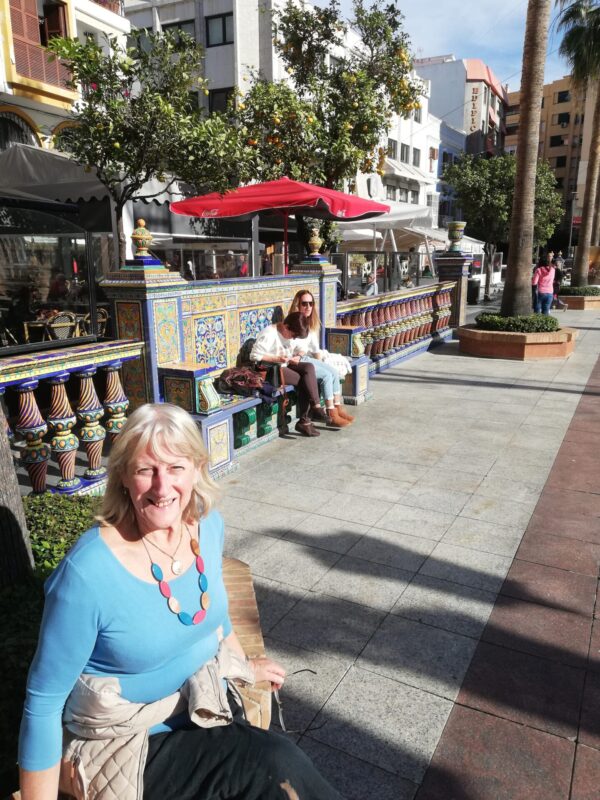

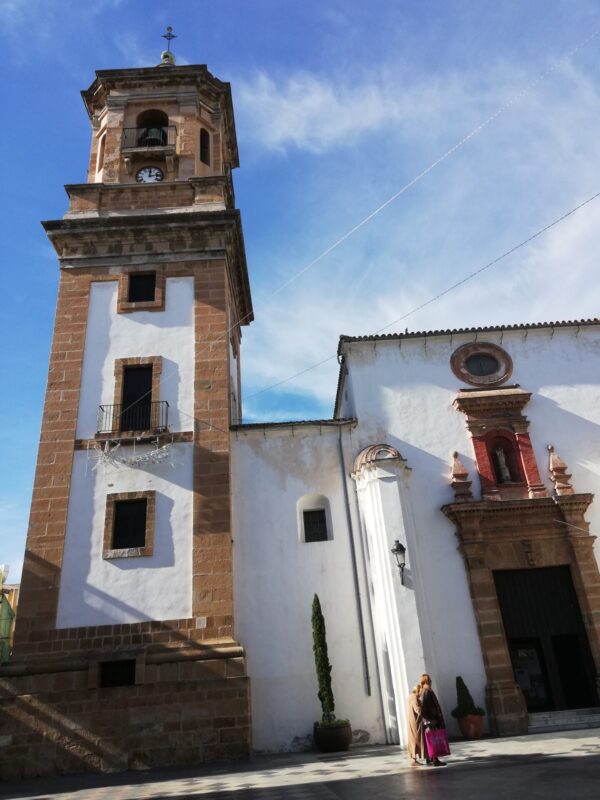
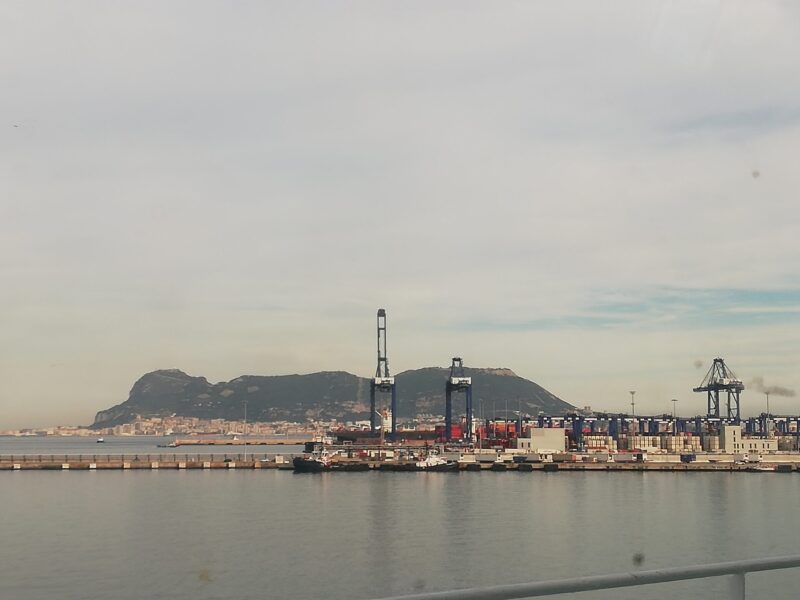
View of Gibraltar from the ferry
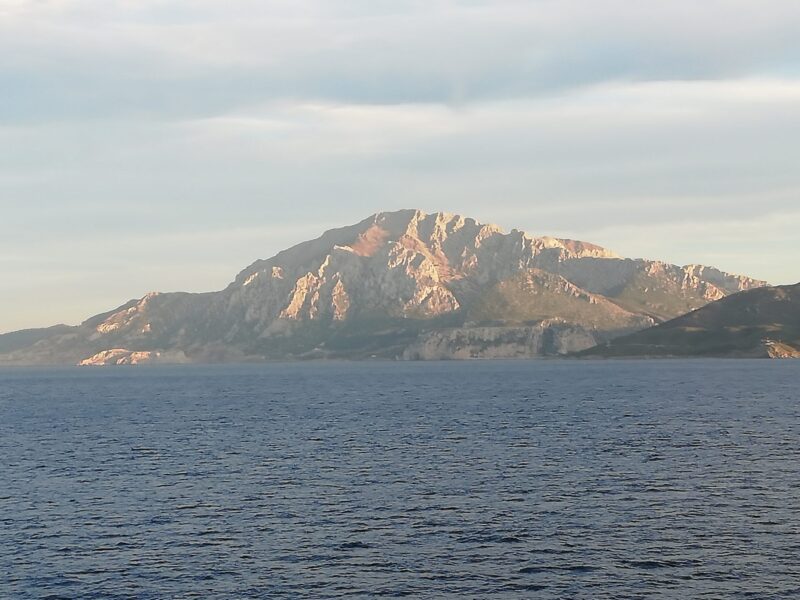
View of Jebel Musa (2,762 feet), Morocco, from the ferry. Jebel Musa, named, according to the 14th-century Berber Muslim geographer Ibn Battuta, in honour of Musa bin Nusayr, to whom the conqueror of Andalusia Tariq ibn Ziyad owed fealty, was known to the ancient Greeks and Phoenicians as Mount Abyla and to the Romans as Columna. Together with the Rock of Gibraltar to the north, it is generally identified as one of the Pillars of Hercules (this title is also claimed for Monte Hacho in the Spanish exclave of Ceuta, to the east of Jebel Musa). The name ‘pillars of Hercules’ derives from one of the twelve labours assigned by the Greek hero Heracles. Perseus had defeated the Titan Atlas by showing him the head of the Gorgon. Atlas was petrified; his hair became a forest and his shoulders became cliffs. Heracles was then directed to get the Cattle of Geryon and deliver them to Eurystheus. Heracles’ way was blocked by the mountain that Perseus had created; to clear a way, he used his mace to split the mountain in half, one part becoming the Rock of Gibraltar and the other becoming a mountain in Morocco. According to the myth, this split in the mountain created a sea link between the Atlantic and the Mediterranean Sea. This link was the Strait of Gibraltar.

We had bought bus and ferry tickets from a travel agency in Fuengirola, which lead to all sorts of strange happenings!!! On landing in Morocco, I was surprised that my phone didn’t show the blue blob indicating where we were. However it showed that the walking time from the port to our hotel was just 11 minutes along a straight road, so we proceeded to walk along a straight road until a small bus stopped and beckoned us inside. He took us to a gate marked “employees exit” and, after we had convinced him in pidgin Spanish that we weren’t employees, he took us back to the ship where an official demanded to know if we had got tickets. I said “No, we’ve just got off the ferry”, Much scratching of heads with the police joining in (also scratching heads) until someone suggested we wait for the next bus. I was starting to get a little fed up, wondering why we needed a bus for an 11-minute walk. Fiddling with the map on my phone, I suddenly discovered the little blob, indicating that we were actually at the Tangier-Med container port, 31 miles from the hotel. A bus arrived and took us to the train station, where we learned that the last train to Tangier port had just left, so we went to the bus station and the last bus had just gone. In desperation, we took a taxi for 30 euros. The driver didn’t take cards and expected to be paid in Moroccan dirhams which we didn’t have. So he stopped at an ATM which didn’t like the look of my card and immediately gobbled it up. Fortunately Jennifer’s card was more popular and we were able to pay the driver, who offered to take us back in 2 days time. A young lad met us in the car park just below the old town and offered to take us to the hotel for nothing, which we thought was rather odd. “Nothing” meant as long as we booked a tour of the old town the next day. The 1-star Dar Bargach hotel was our kind of place. It was built in 1903 and, 119 years later had the occasional crack in the walls and a bit of discolouration which might have been damp. A rather complicated layout of the building caused Jennifer to keep blundering into the room of some elderly French bloke. But we loved it and would recommend it. The helpful receptionist took us along one of the little narrow pathways to a nearby restaurant, the “Kebdani” where we had a delicious “tajine rif” with big chunks of chicken cooked in spices, olives, dates, oranges and herbs. The next day I wandered outside the hotel and was immediately collared by our guide, Mohammed, who gave us an excellent 2-hour tour of the kasbah and the medina.
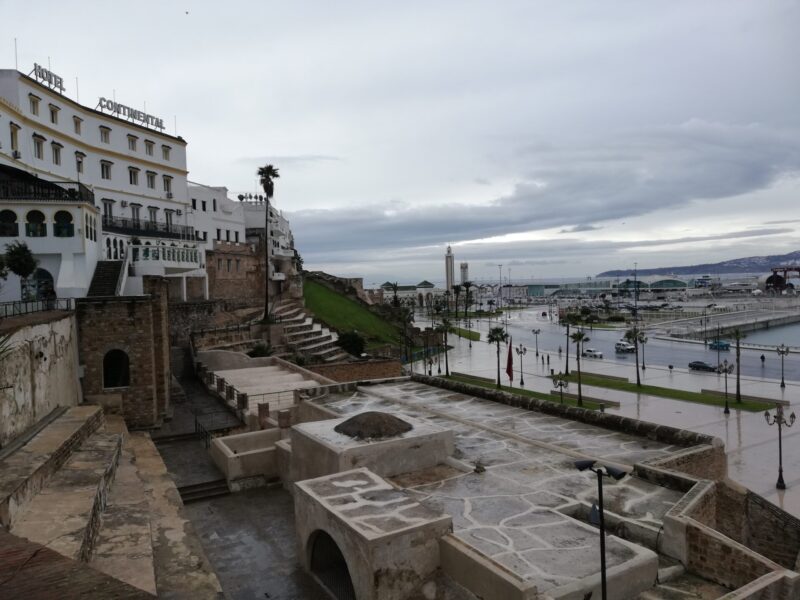
The port and the Continental Hotel

Kebdani restaurant
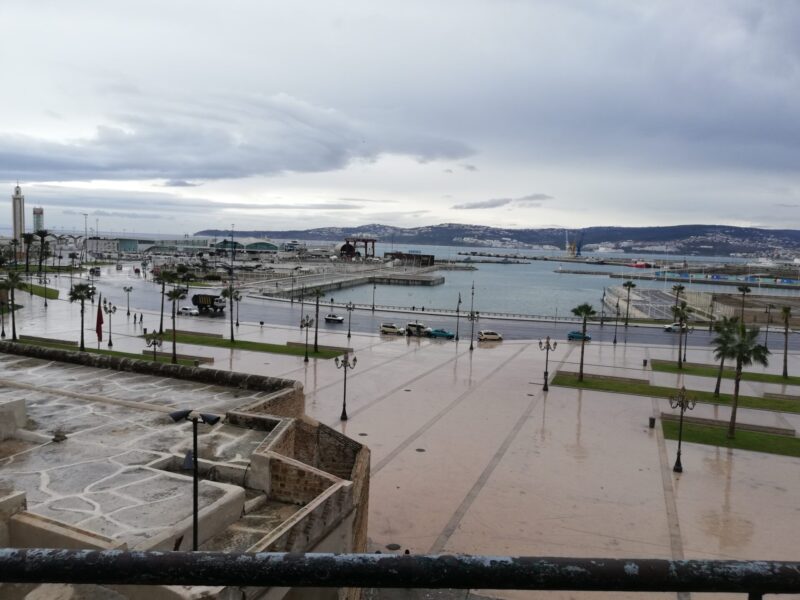
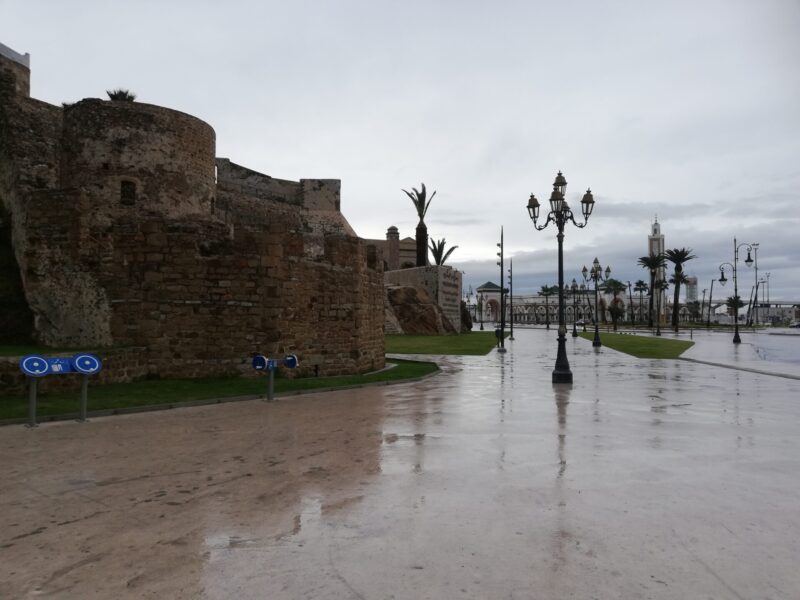
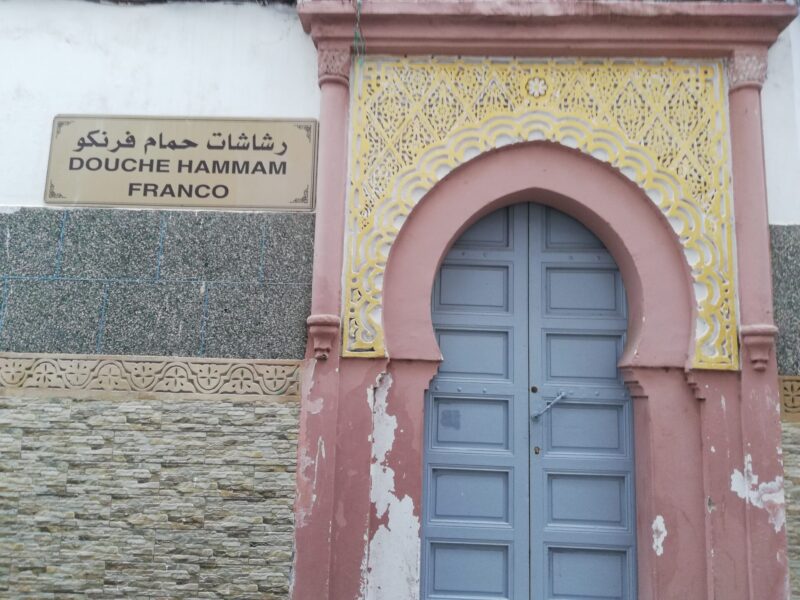
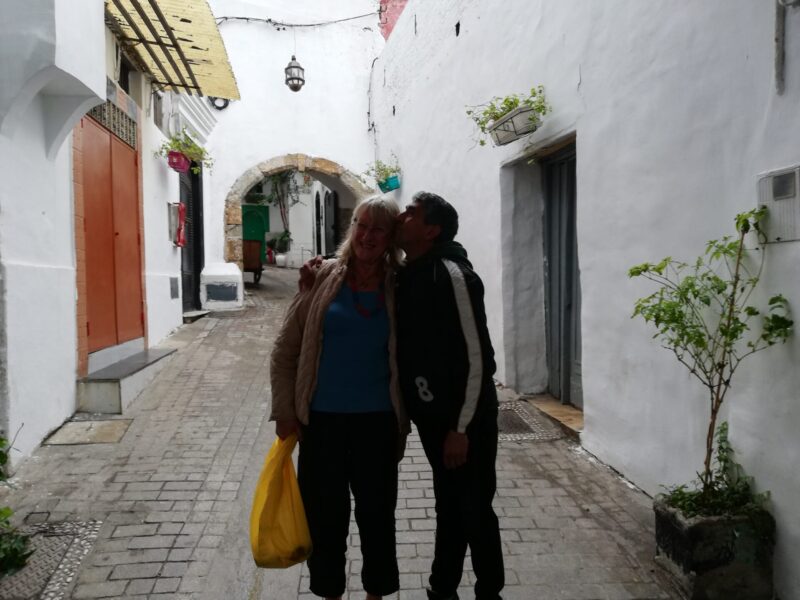
Jennifer and Mohammed
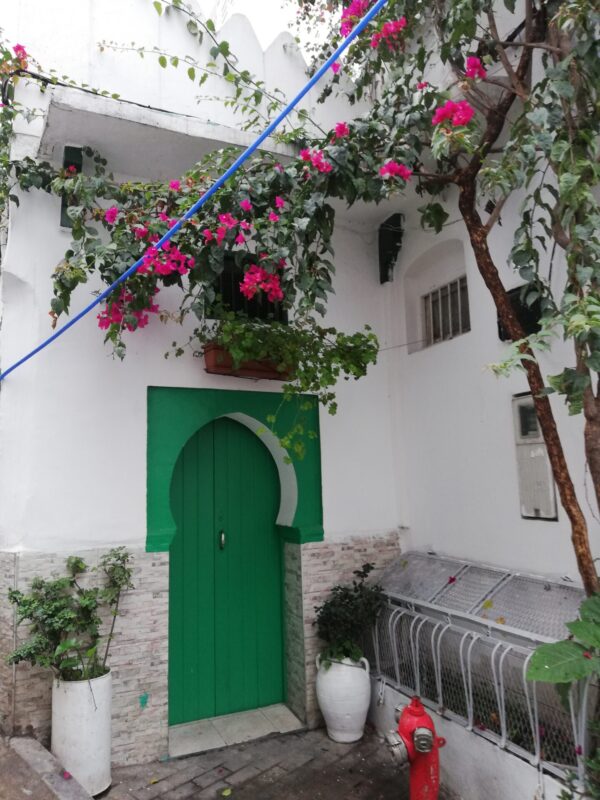
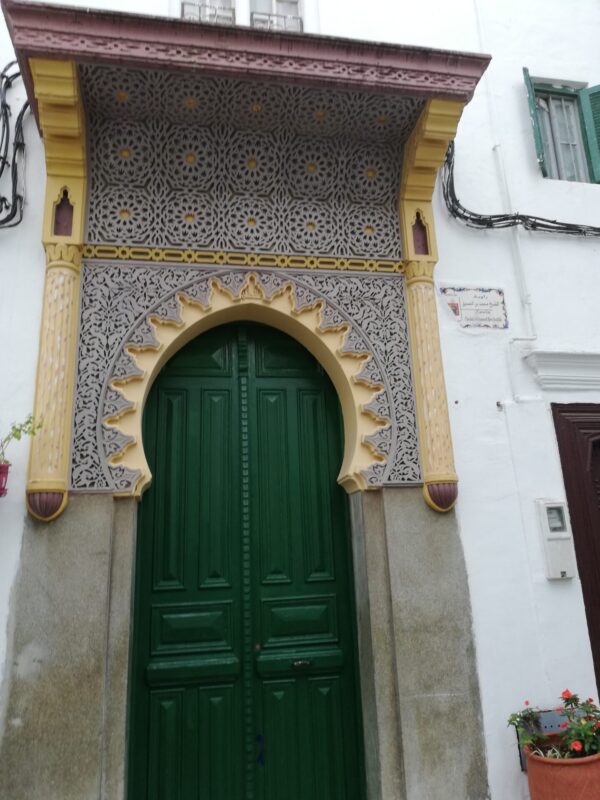


The port from the kasbah wall
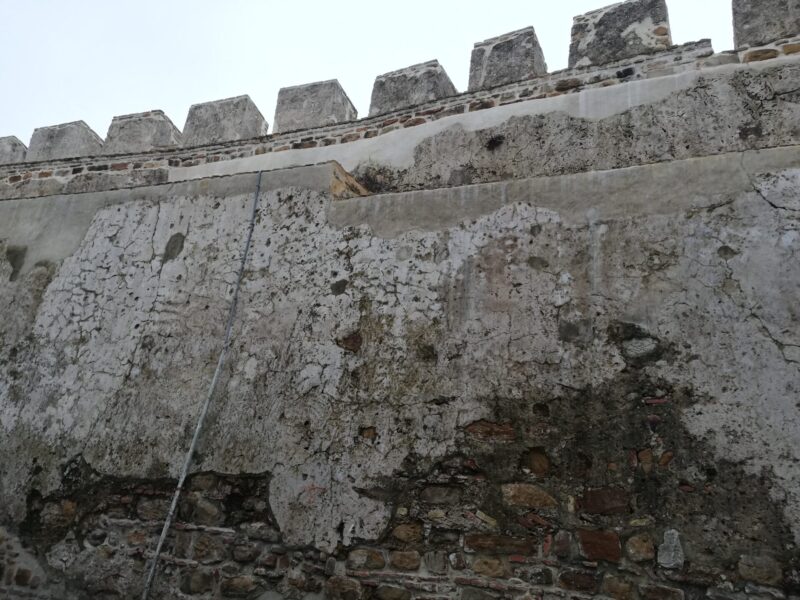

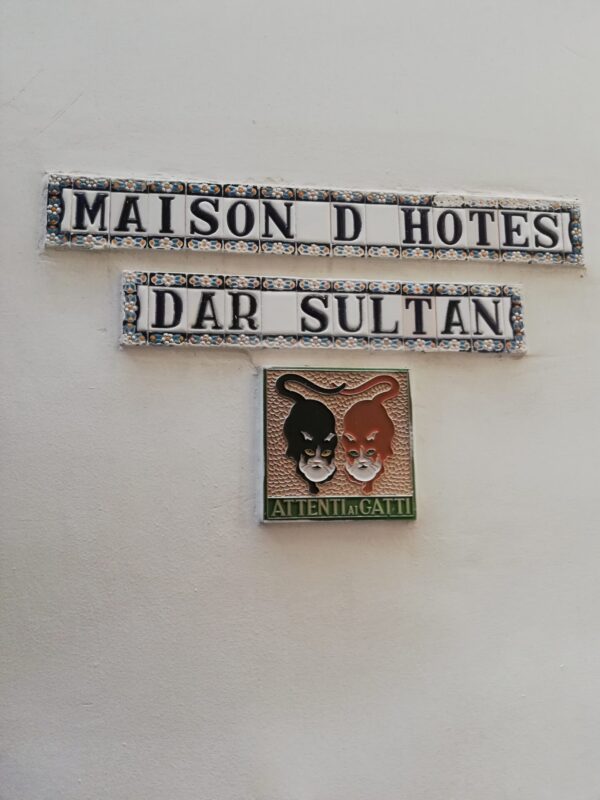
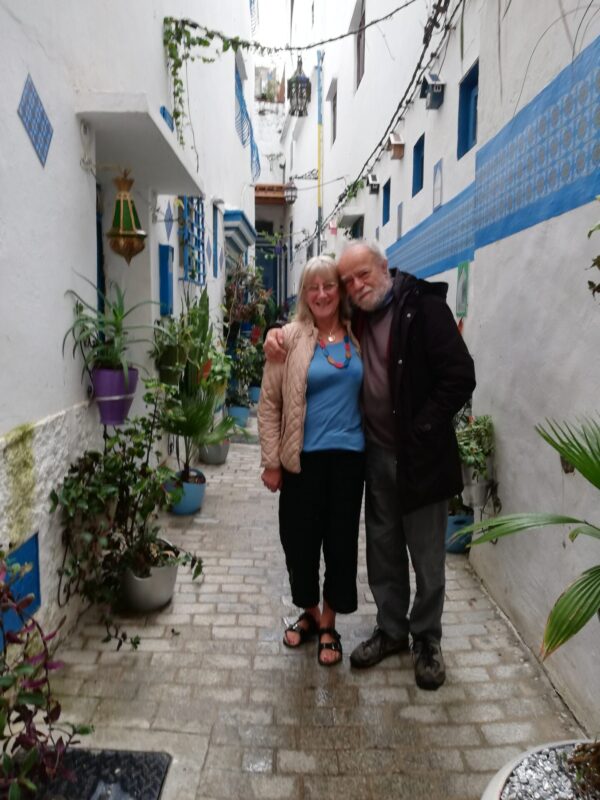
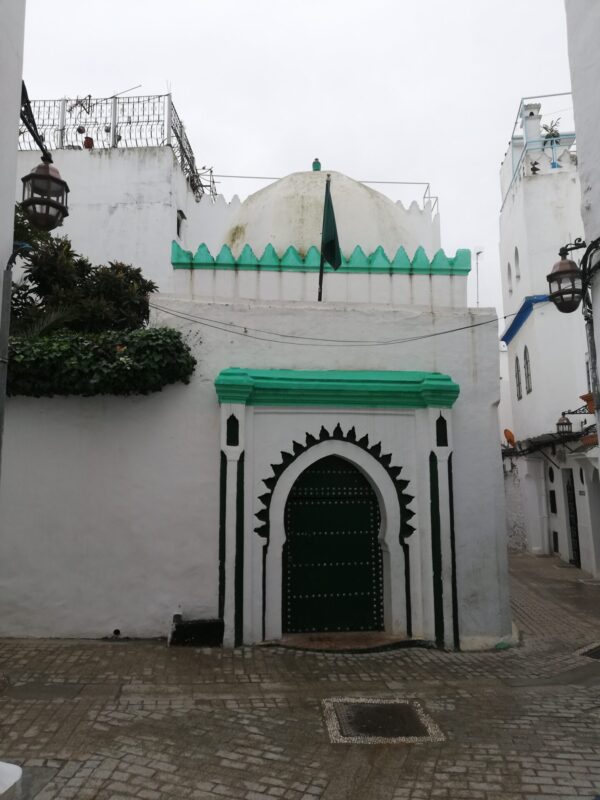
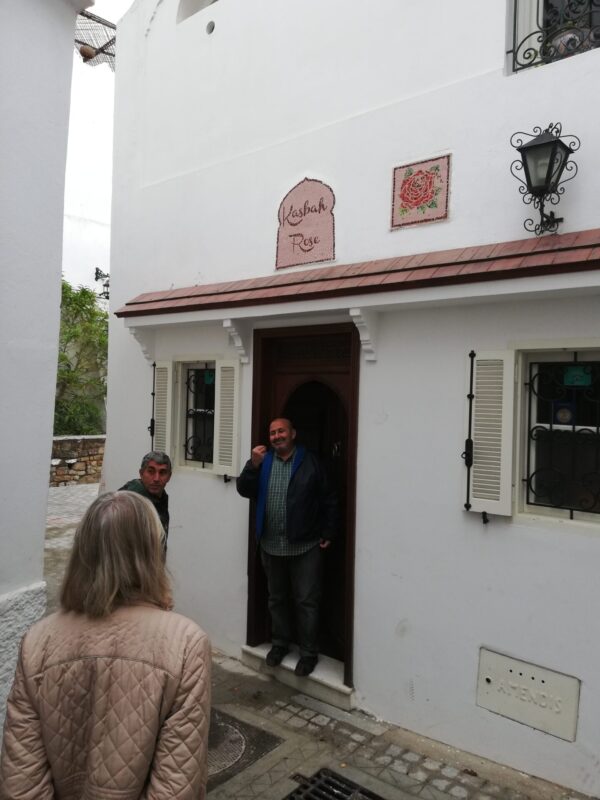
Mohammed having a chat with his friend
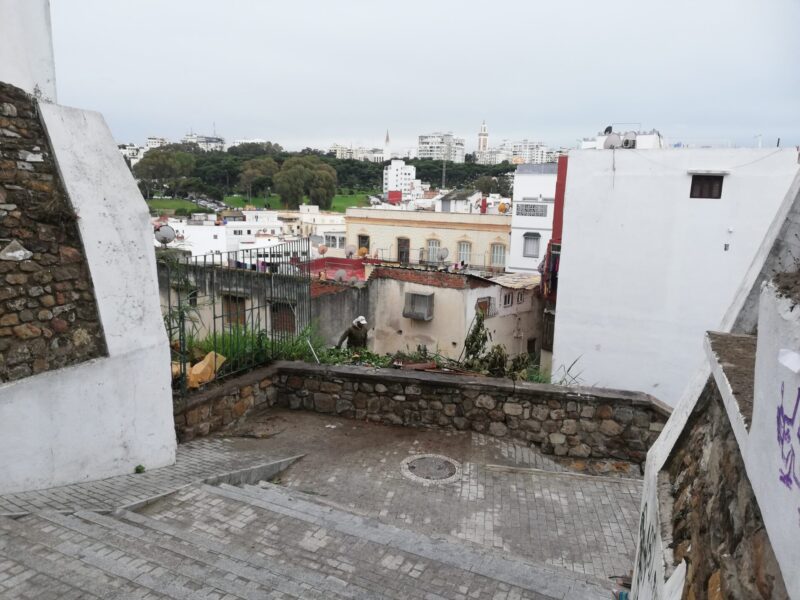
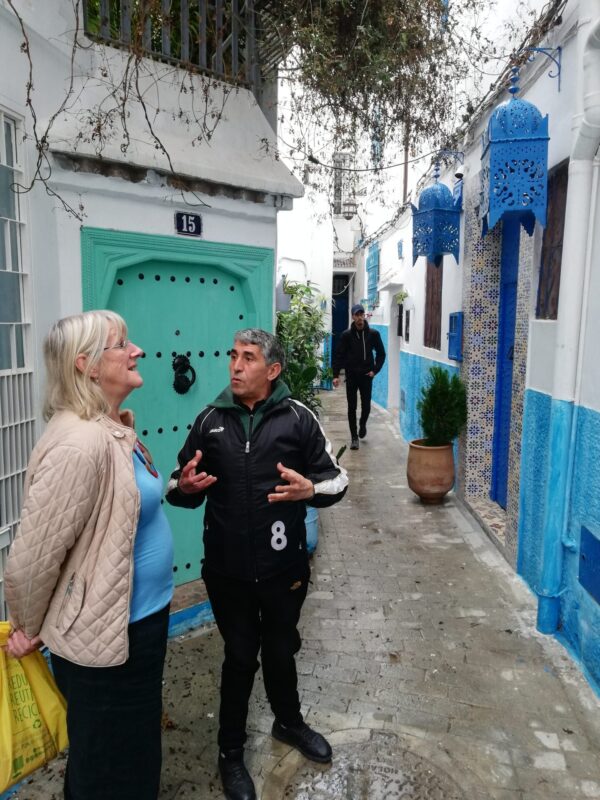
“My friend has got them this big”
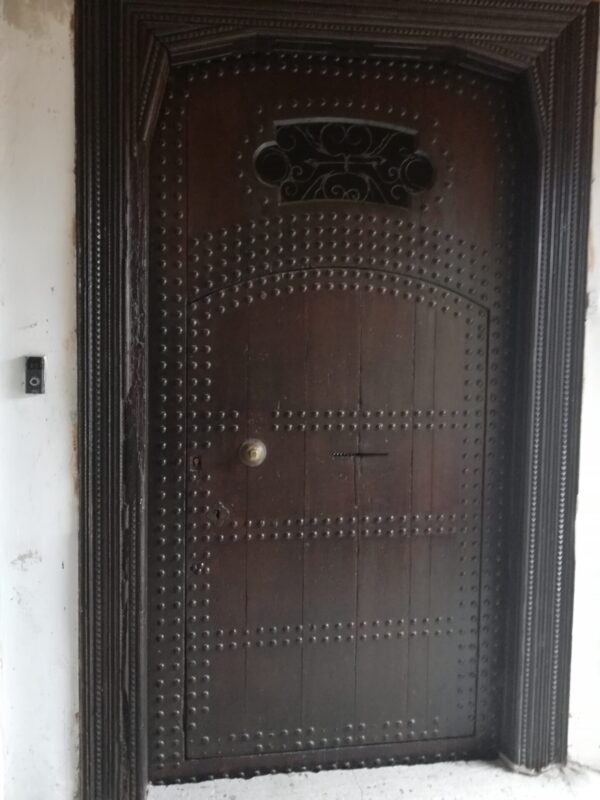

The minaret of the Grand Mosque
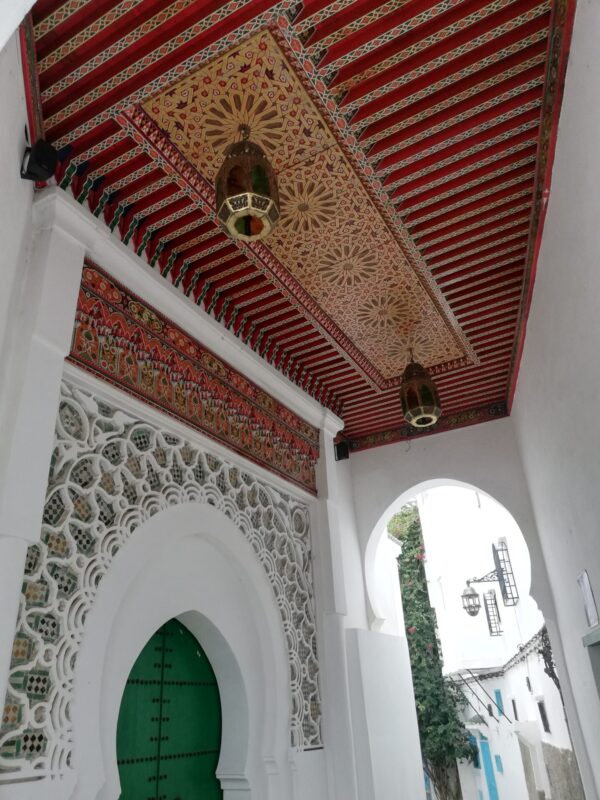

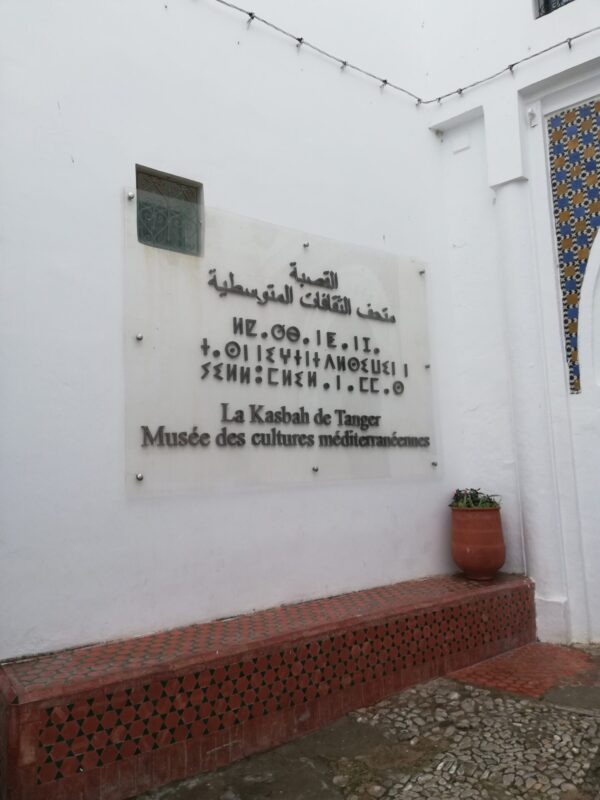
The Kasbah Museum
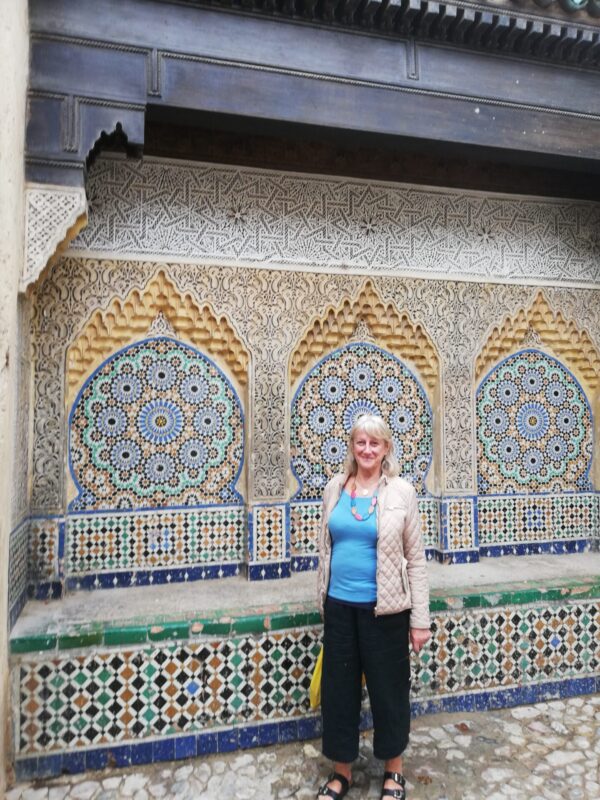

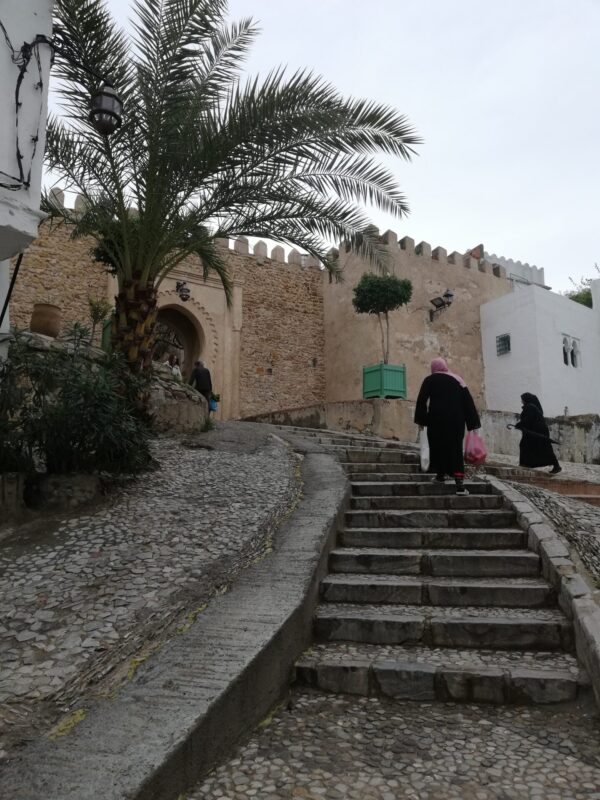


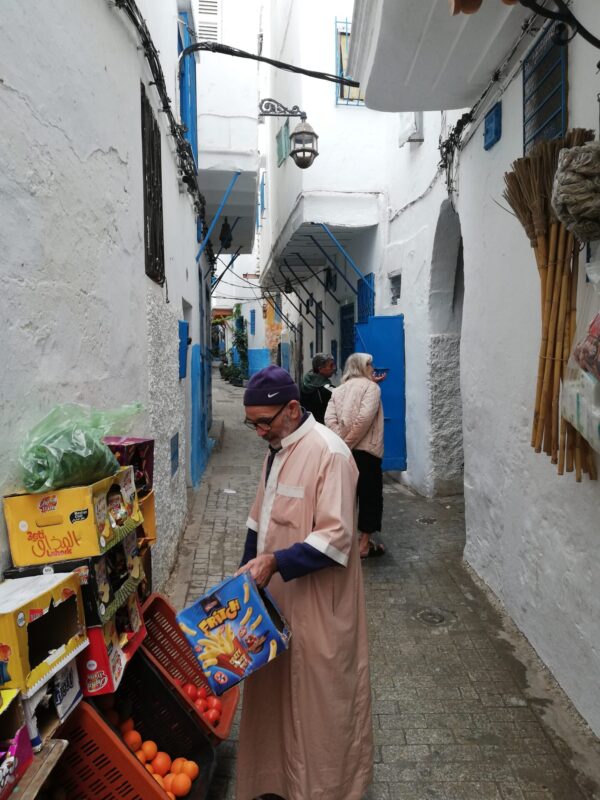

The Mausoleum of Ibn Battuta who travelled from Tangier all over the Middle East, Russia, China, east Africa and southern Spain.
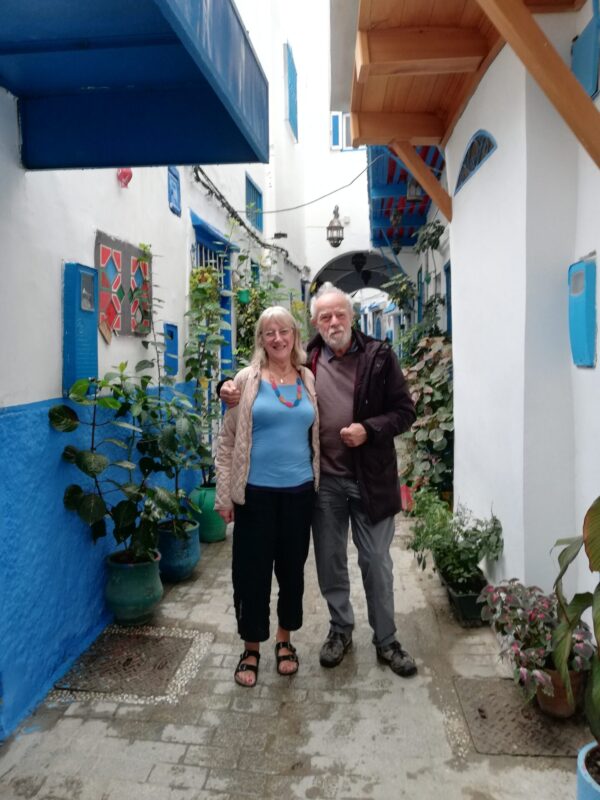
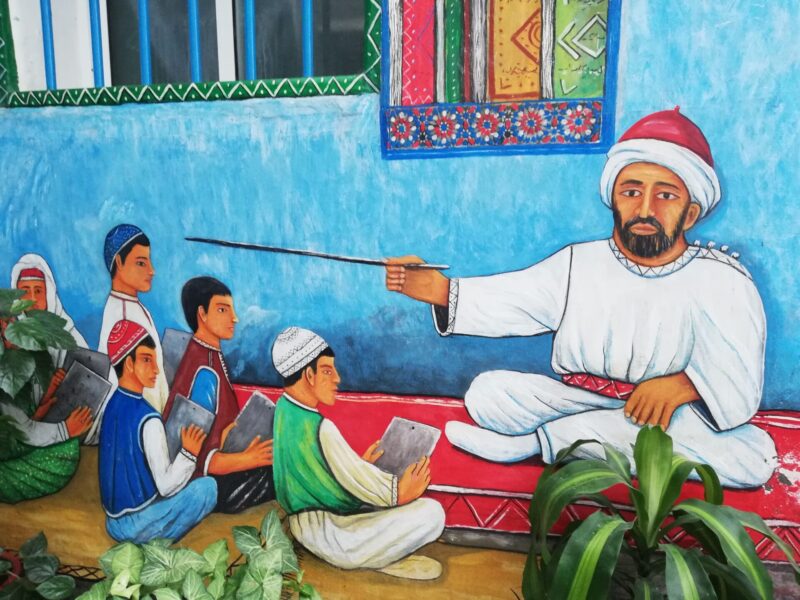
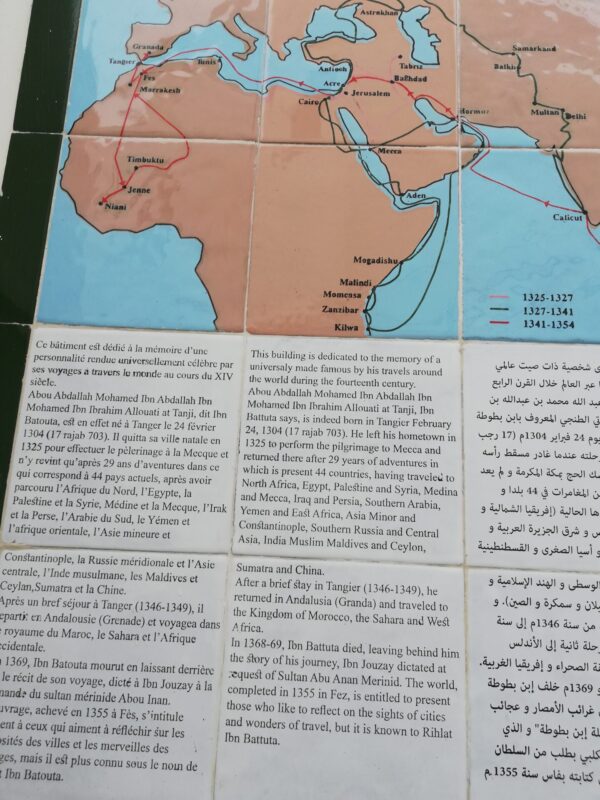
Map of ibn Battuta’s journey. He also went to China.
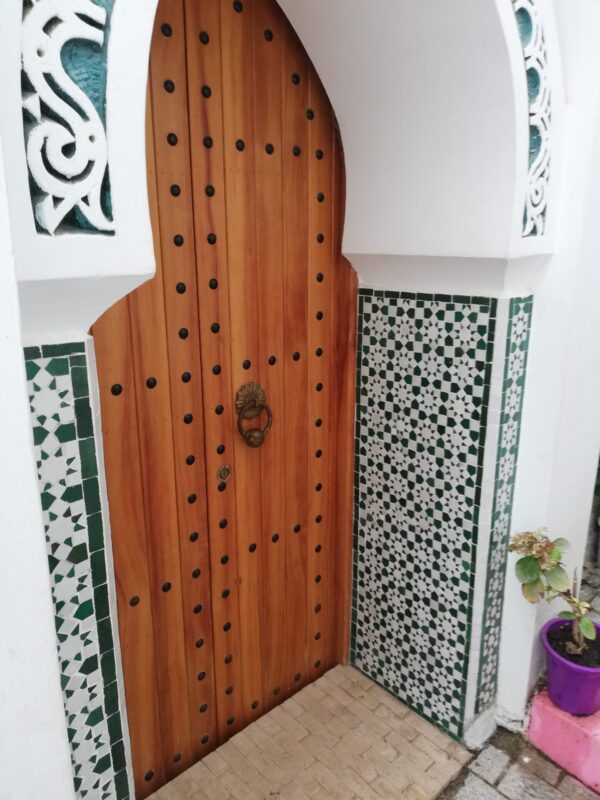
Entrance to the Grand Mosque.
The site of the mosque is believed to have originally been the site of a Roman temple dedicated to Hercules and of a 5th-century Roman church. A grand mosque (Friday mosque) was established on this site during the Marinid dynasty (13th-15th centuries). Tangier was frequently besieged by European forces in the 15th century until it was finally conquered by the Portuguese in 1471. The Portuguese immediately converted the mosque or rebuilt the site into a cathedral. In 1662 Tangier was passed to the English as part of Catherine of Braganza‘s dowry to Charles II. After years under pressure from local Muslim mujahidin attacks, the English evacuated Tangier in 1684, blowing up its fortifications before leaving. The sultan of Morocco at the time, Moulay Ismail from the Alaouite dynasty, immediately claimed the city and supported its Muslim resettlement (including by many of the mujahidin who had fought against the European presence). The Muslim settlers immediately sought to pray in the cathedral which had formerly been the grand mosque. Moulay Ismail ordered the new governor, Ali ibn Abdallah Errifi, to convert the building to a mosque.
The new mosque, however, was reportedly very crude, despite being an important symbol of the city’s return to Muslim rule.Muslim travelers commented on its poor amenities. The Alaouite Sultan Moulay Slimane was reportedly so shocked by its condition upon seeing it in 1815 that he immediately ordered that it be completely rebuilt. Artisans from outside Tangier were recruited to help with the task, and the reconstruction was completed in 1817-18. The mosque’s current form dates essentially from this construction. Subsequent Alaouite sultans continued to embellish or restore the mosque, reinforcing its role as a symbol of the government’s importance in upholding religious orthodoxy in the face of other popular forms of religion focused around Sufi marabouts. Along with the khutba, the weekly Friday sermon, important official announcements were also delivered here.
The mosque was also a focus of civic life and urban infrastructure. It was located near the Inner Market (formerly the Roman Forum), following a pattern found in other Moroccan and Islamic cities where the most important or prestigious commercial activities took place near the city’s main mosque. Across the street on the southwest side of the mosque was the house of the qadi, or judge, where legal cases were heard and resolved. Next to this was the house of the muwaqqit, the timekeeper of the mosque (i.e. responsible for accurately determining the time of prayers), which was connected to the mosque itself by an overhead passage between the house and the minaret. Further south on the same street was a cistern, a maristan or hospital dedicated to caring for the mentally ill, and a house for washing the bodies of the dead (especially for foreigners who died far from home, given Tangier’s role as a port). On the mosque’s northwestern side, across the street from its main entrance, was a madrasa (school) built in the 18th century under sultan Muhammad ibn ‘Abdallah. Attached directly to the mosque itself, behind its southeastern wall (the qibla wall), was a library and a funeral mosque (jama’ al-gna’iz, where funerary rites where performed before the body’s burial). Some of these amenities were managed and funded by the habous (or waqf) of the mosque; that is, a charitable trust under which the mosque drew revenues from various sources for its upkeep and the upkeep of its associated establishments.
In the decades prior to colonial rule and the establishment of an international (European) regime governing Tangier (between 1924 and 1956), the mosque’s civic importance declined and the fiscal assets of its habous were increasingly confiscated or diverted by the government. Under colonial rule all habous establishments were further curtailed and lost their role as agents of urban development. Like in many other North African cities, a Ville Nouvelle (“New City”) was established outside the old city walls and rapidly outgrew it, thus reducing the status of the old medina (walled city) to a relatively undesirable and decaying neighbourhood, along with its main mosque.
Mohammed V visited the mosque on April 11, 1947, going on to make a historic speech at Mendoubia Gardens. King Hassan II ordered an extension to the mosque in 1962, expanding it on its southwest side. The mosque was restored again in 2001 by order of Mohammed VI


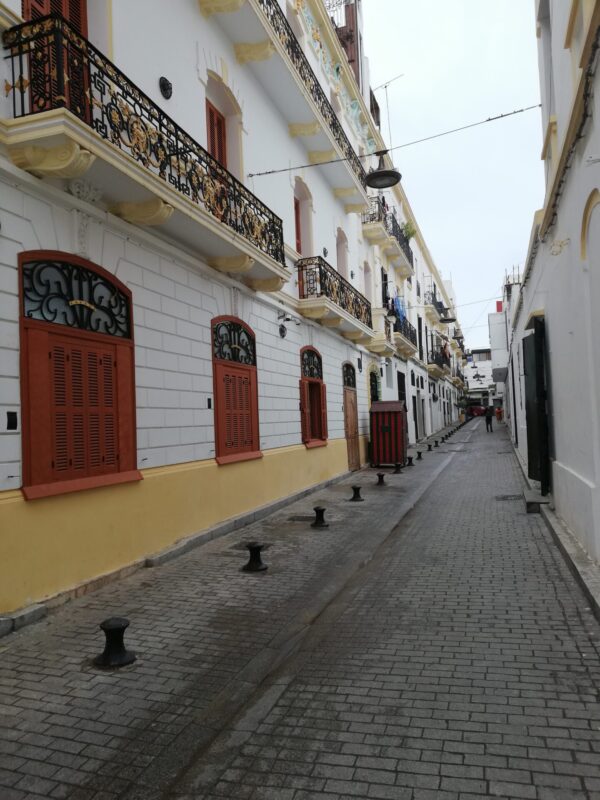
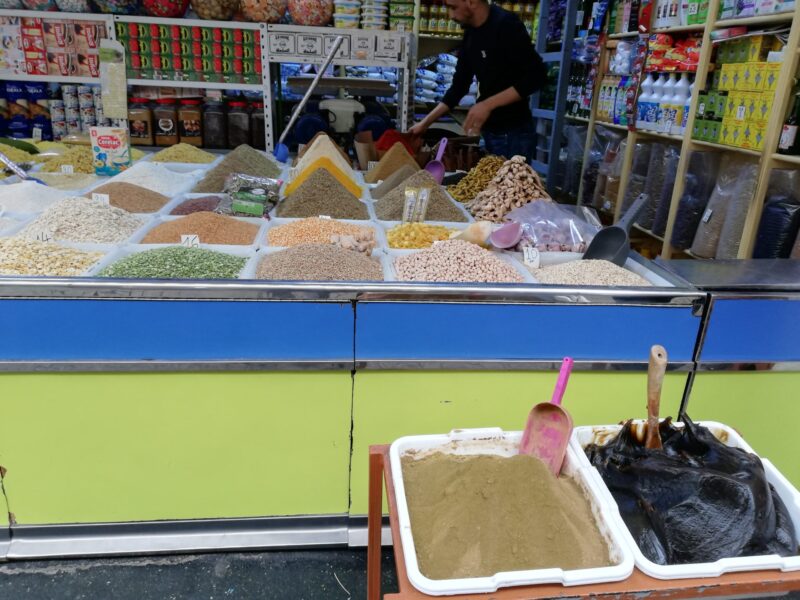
The Medina: Spice stall
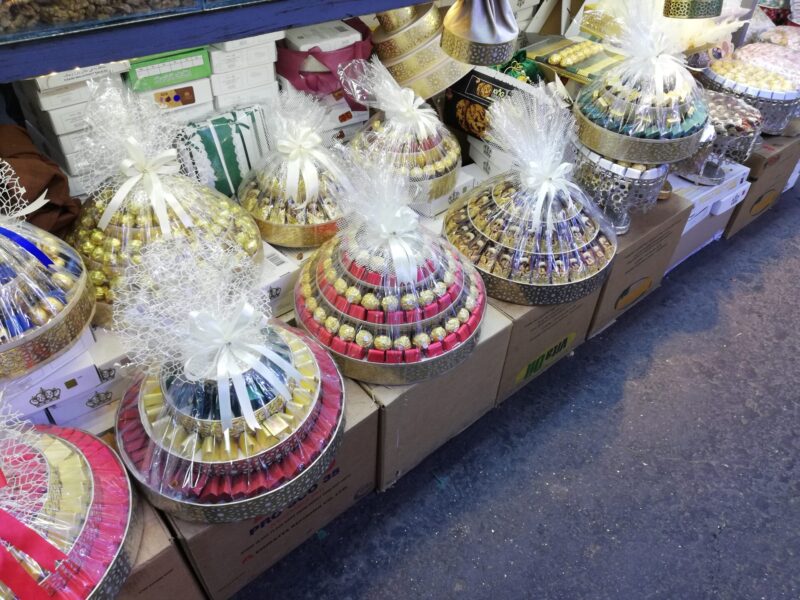
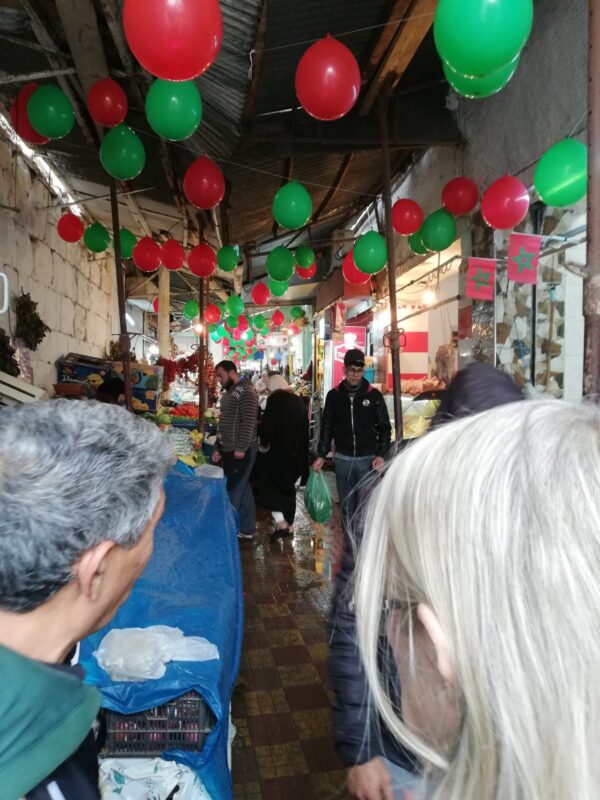
Moroccan colours of red and green, ahead of the game against Canada which we saw on the telly in the hotel.
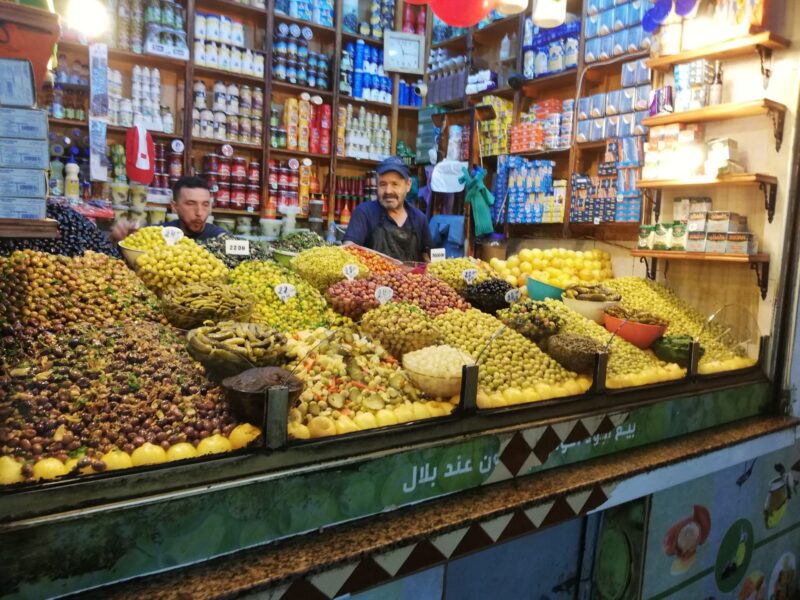
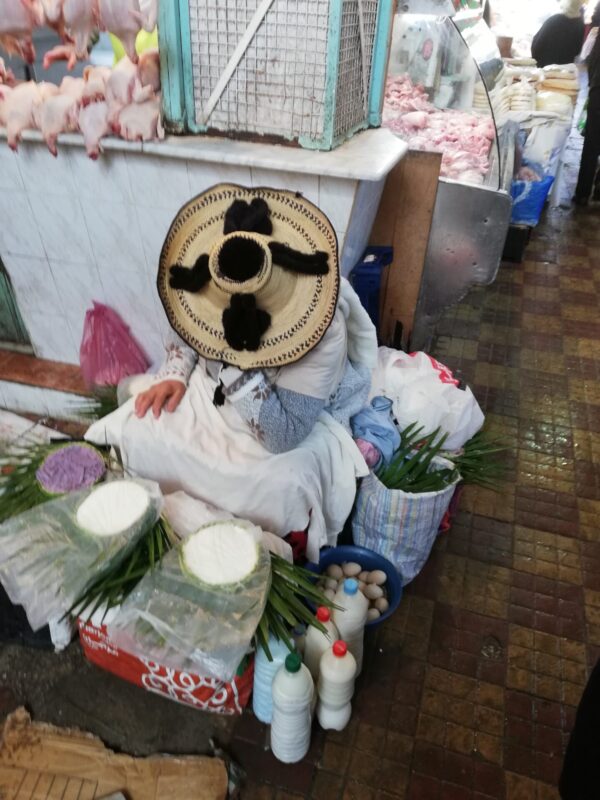
Berber woman selling butter, dipping her head because she didn’t want to be photoed
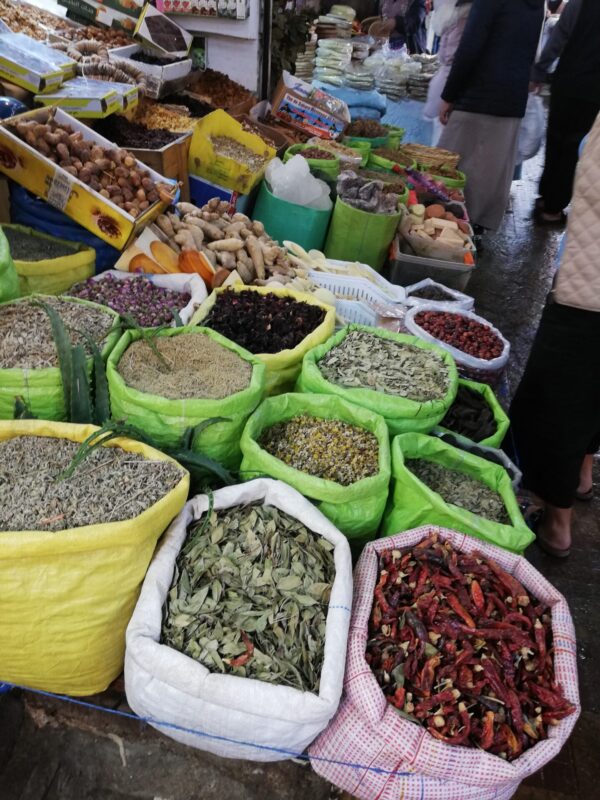
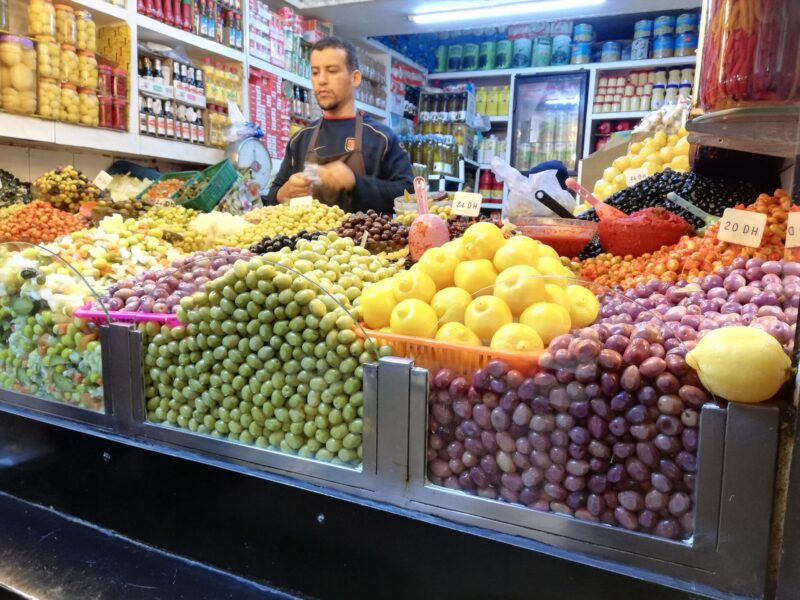

The meat section of the Medina, which smelled absolutely disgusting
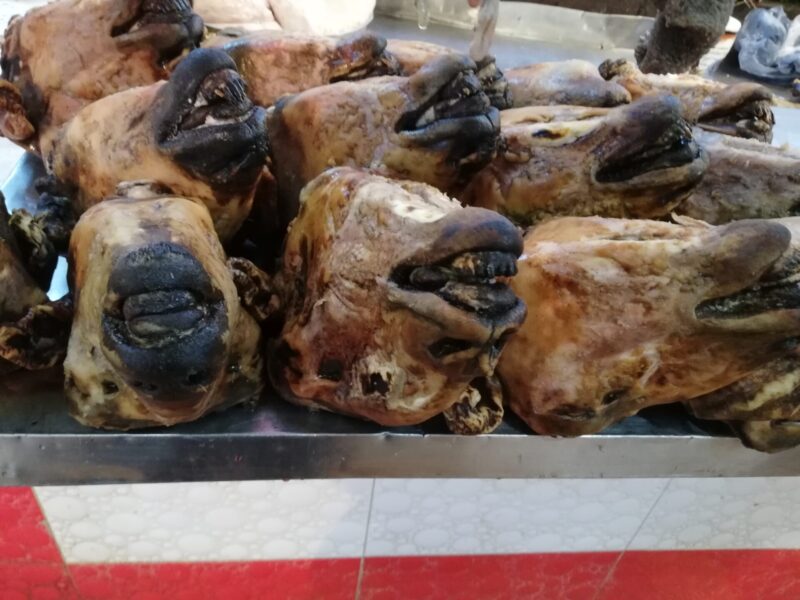
Sheeps’ heads. We didn’t buy any.
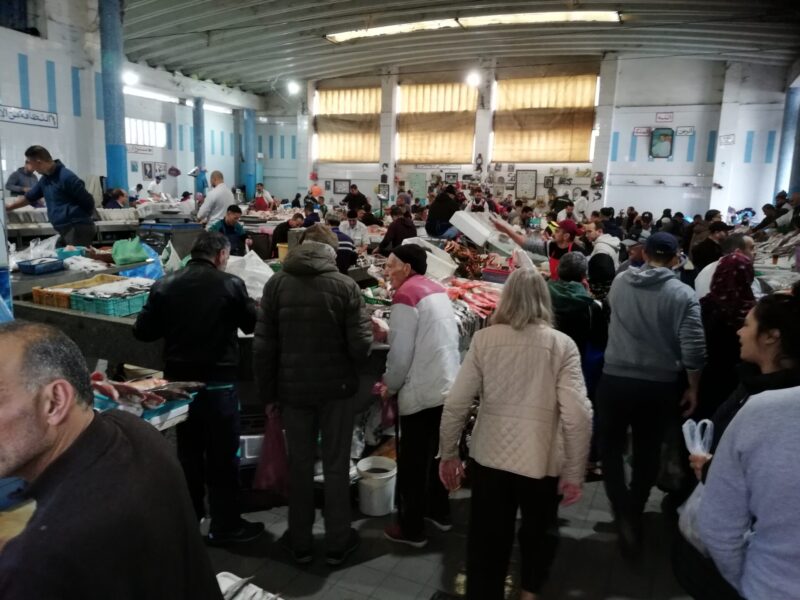
Fish section


swordfish

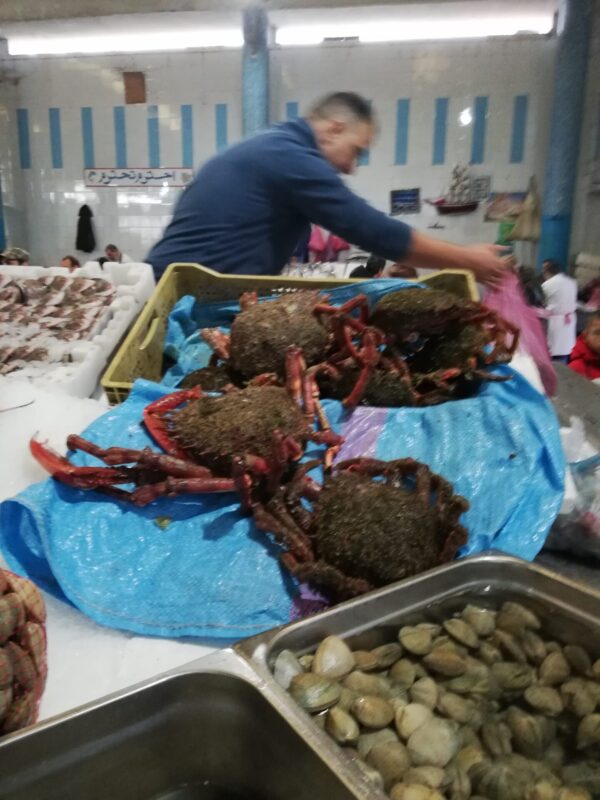
Dunno what these things are
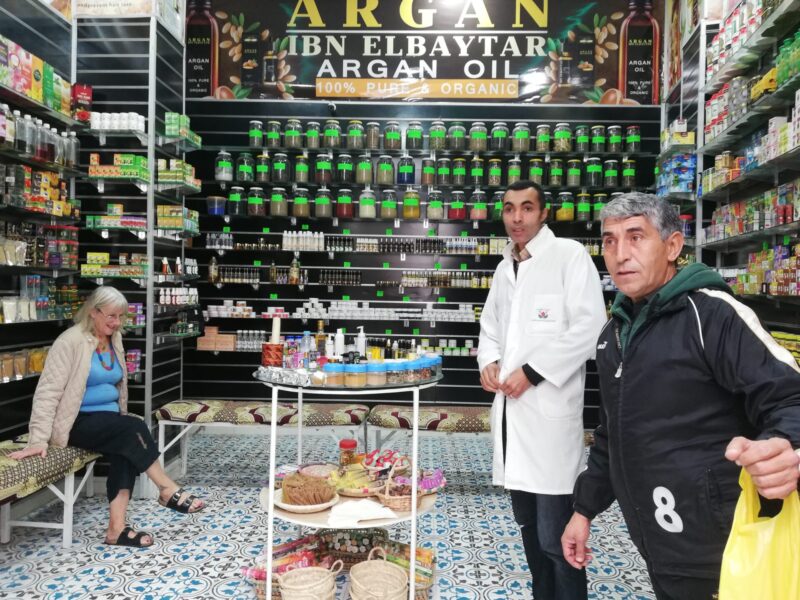
Obligatory stop on the tour circuit. Spices and medical treatments. The bloke in the white coat was trying to sell me some uppy-downy inny-outy pills. Told him I didn’t need them.

Buy some of these nuts and you can turn into a sheep that climbs trees. Jennifer bought some saffron and various spices while I bought some arganoil for psoriasis
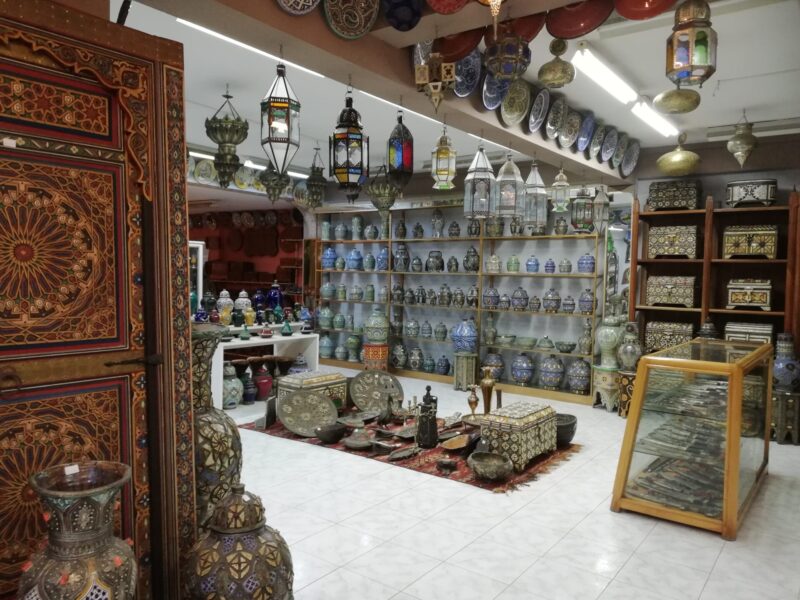
The next stop was a jug and carpet shop
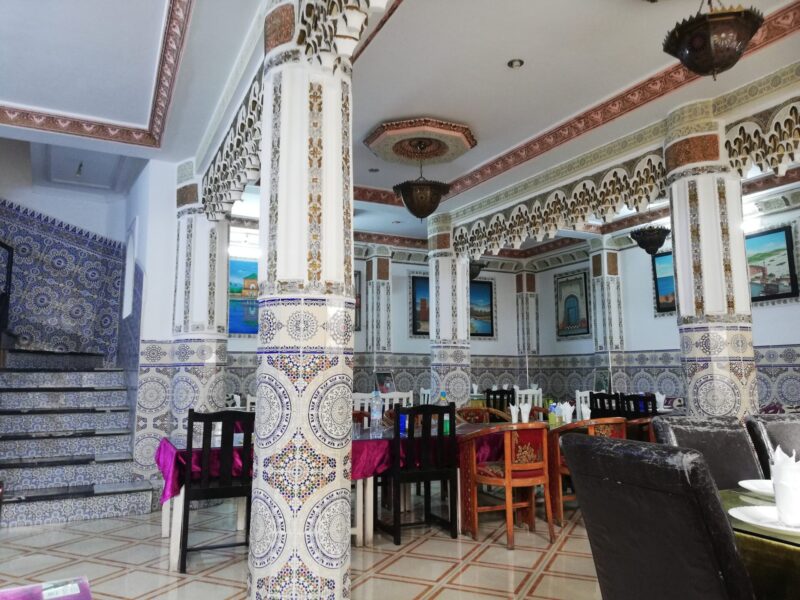
Next stop a posh restaurant. The tajine wasn’t as good as the Kebdani. The meal was surprisingly cheap, but he demanded a huge tip. Told him to eff off.
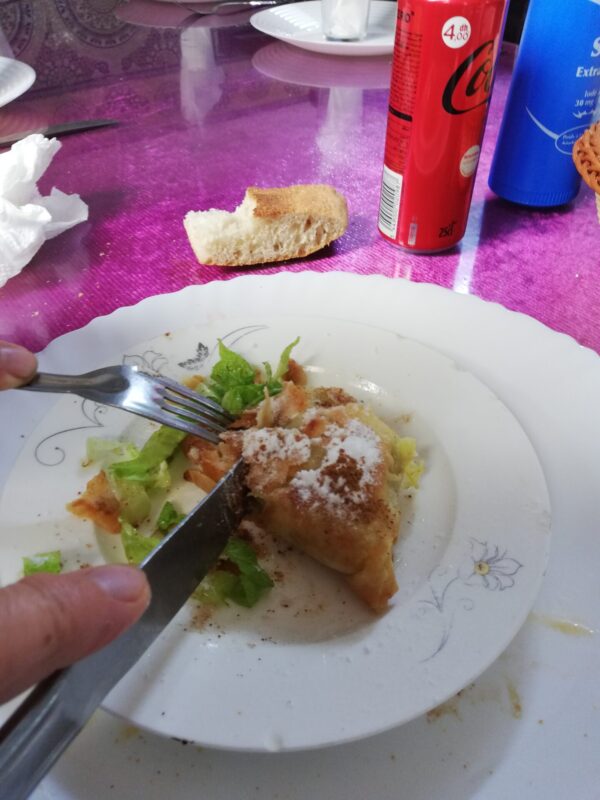
A traditional Berber pie, but rather tasteless.
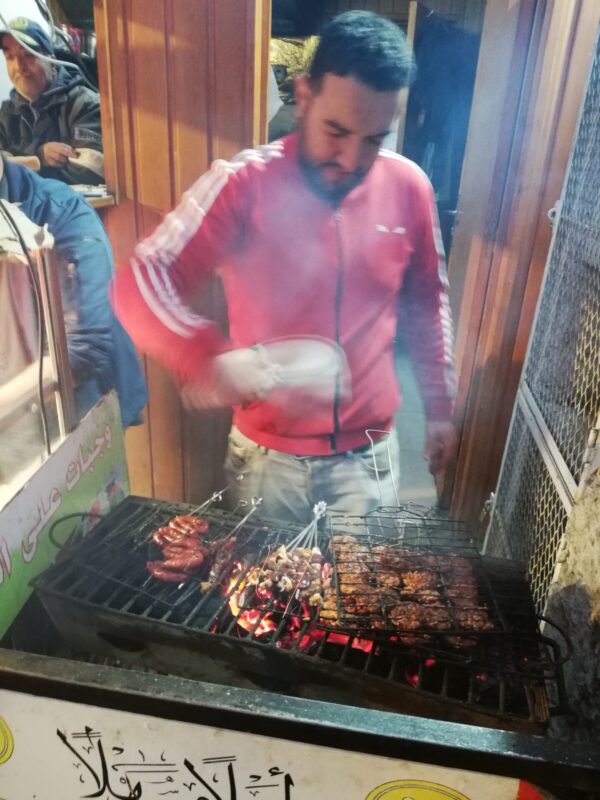
In the evening we wandered outside to watch the cars blasting their horns to celebrate Morocco’s victory over Canada and had kebabs from this stall.
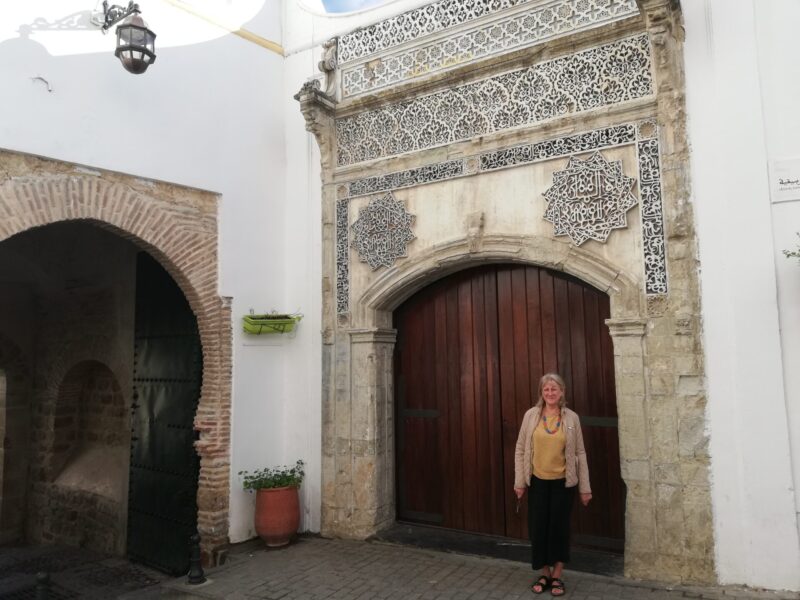
Ancient gate into the old town, near our hotel. The taxi driver took us back to Tangier Med after stopping to get my credit card back. At the port we met a couple of Americans who had booked a ferry to Tangier (probably at a tour agency in Fuengirola) and finished up at the wrng port. Daft buggers.